Col Anuradha Sangal (Retd.) Head of Clinical Operations, Dozee

DIAGNOSTICS
Howtech is redefining the diagnostics space in India?
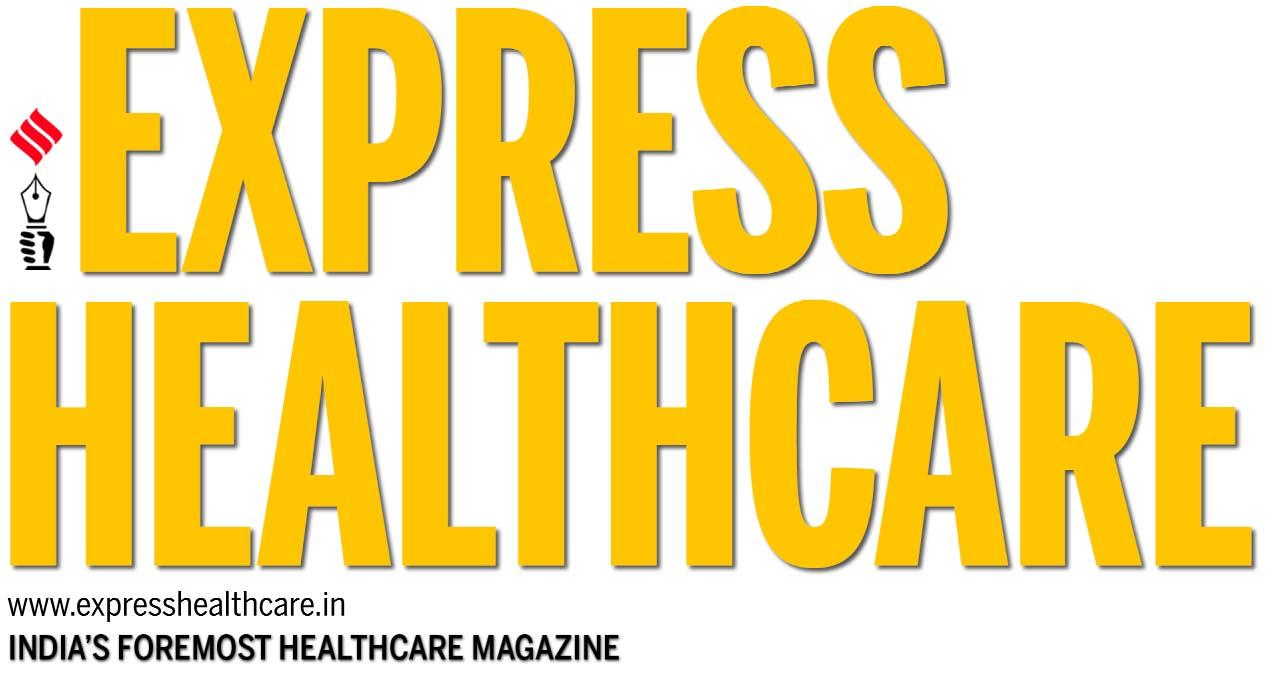



VOL.16 NO 4 PAGES 48
MAY2023,`50
INTERVIEWS
LÖWENSTEINMEDICALGMBH&CO.KG
Regd.Office: ArzbacherStraße80
56130BadEms,Germany
Tel.:+49260396000

Fax:+492603960050
Website:www.hul.de
ATOMMEDICALCORPORATION






Regd.Office: 18-15,Hongo,3-chome, Bunkyo-ku,Tokyo,113-0021,Japan


Tel.:+81338152941

Website:www.atomed.co.jp
ISO13485:2016CERTIFIEDCOMPANY












ISO9001:2015CERTIFIEDCOMPANY



BPLMEDICALTECHNOLOGIESPRIVATELIMITED
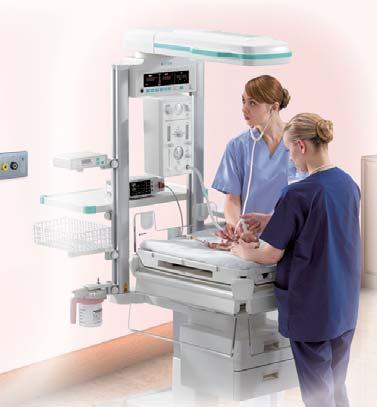


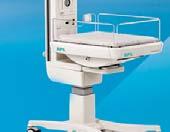
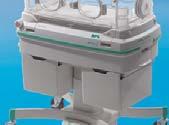


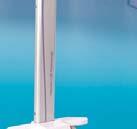




Regd.Office: 11th KM,BannerghattaRoad, Arakere,Bangalore-560076,India.

Website:www.bplmedicaltechnologies.com


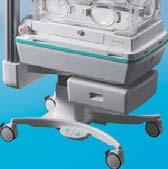

TollFree:1800-4252355



ForEnquiries:sales.medical@bpl.in




CIN:U33110KA2012PTC067282

 DualIncuiAirIncuiFloret1000
Series
BlossomDuo
InfaWarmerSunflower Warmer
DualIncuiAirIncuiFloret1000
Series
BlossomDuo
InfaWarmerSunflower Warmer
Our
istoseeasmileonthefacesofbabies, familymembersand HealthcareProfessionals.
LeoniPlus
GreatestSatisfaction
BabyCare SimplyRedefined
©2023BPLMedicalTechnologiesPrivateLimited.Allrightsreserved.BPLMedicalTechnologiesPrivateLimited,LÖWENSTEINMEDICALGMBH&CO.KG&ATOMMedicalCorporation reservestherighttomakechangesinproductfeatures,specifications,aestheticsand/ortodiscontinuethesameatanytimewithoutnoticeorobligation. Followus@bplmedtech BPLMICPAD24:08:2023

















VOL.16 NO 4 PAGES 48

































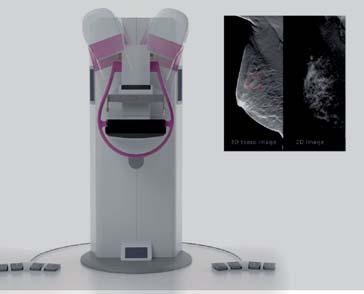
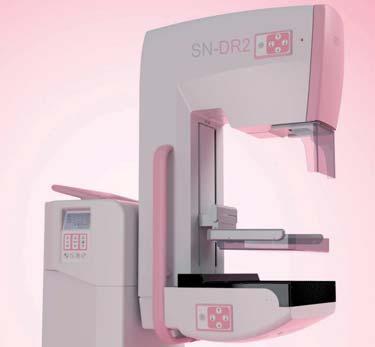

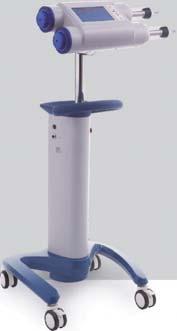



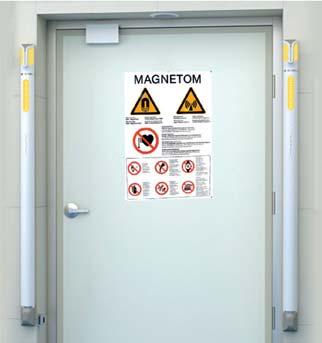
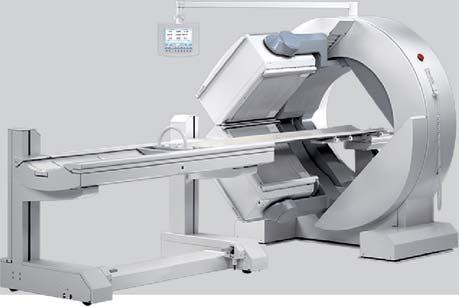




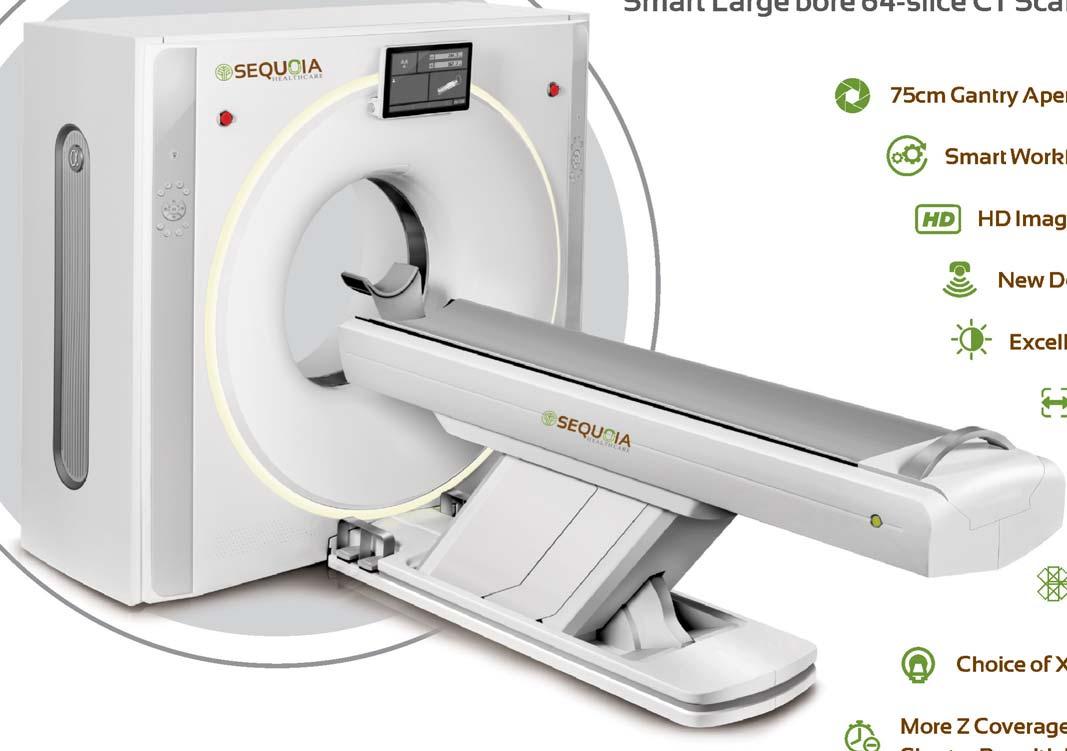
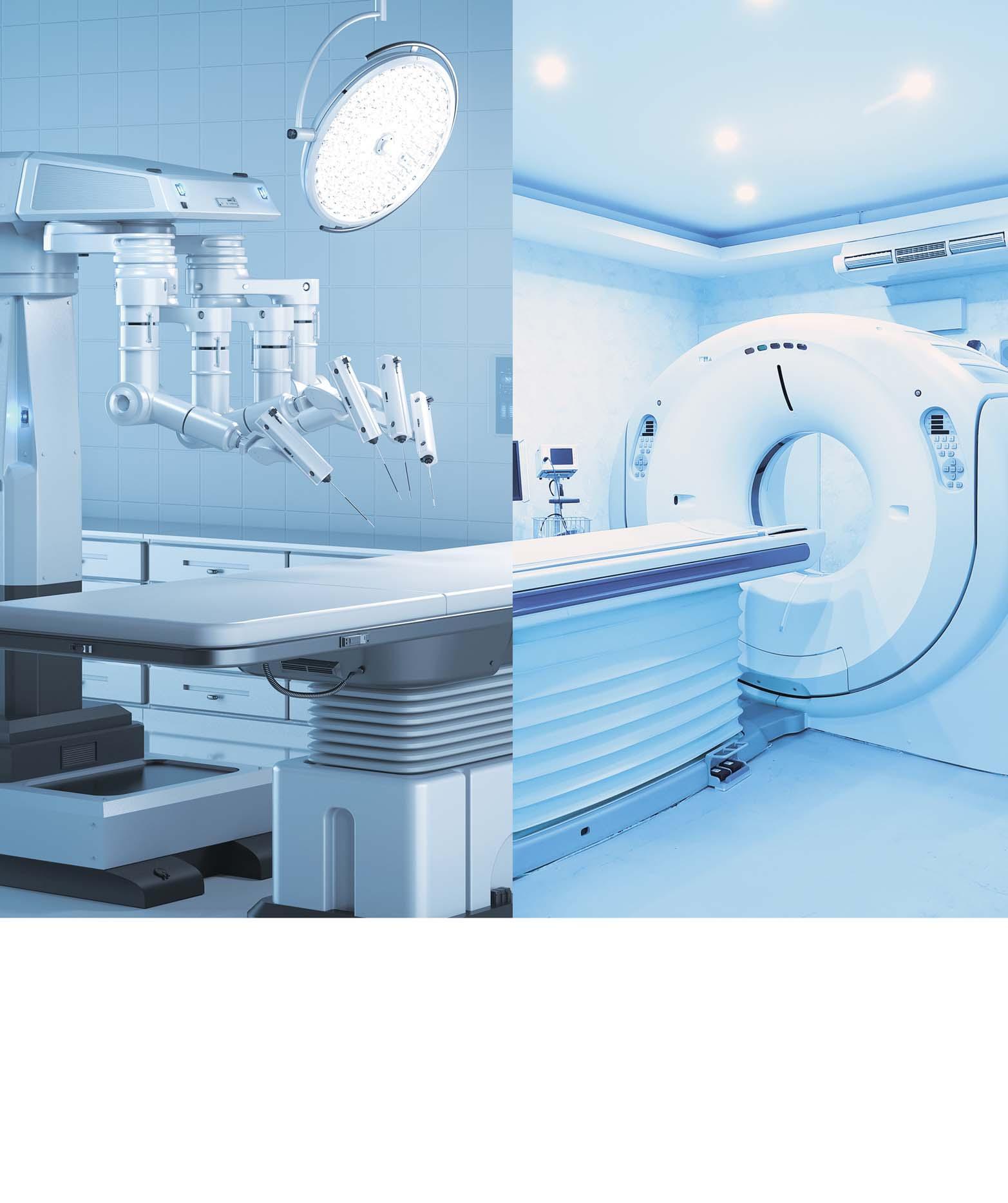











CONTENTS
Chairman of the Board
ViveckGoenka
Sr.Vice President-BPD
Neil Viegas
Vice President-BPD
Harit Mohanty
Editor
Viveka Roychowdhury*
Editorial Team
Lakshmipriya Nair
Kalyani Sharma
DESIGN
Art Director
Pravin Temble
Senior Designer
Rekha Bisht
Senior Artist
Rakesh Sharma
Marketing Team
Rajesh Bhatkal
Ashish Rampure
Debnarayan Dutta
Production Co-ordinator
DhananjayNidre
Scheduling & Coordination
Pushkar Waralikar
CIRCULATION
Mohan Varadkar
HEALTHCARE IT
Powering public health with genetics

Integrating genetic testing into public health settings has the potential to reform healthcare delivery.Making it affordable needs better strategies | P-16
P14: INTERVIEW COLANURADHASANGAL (RETD. Head of Clinical Operations, Dozee
DIAGNOSTICS STRATEGY
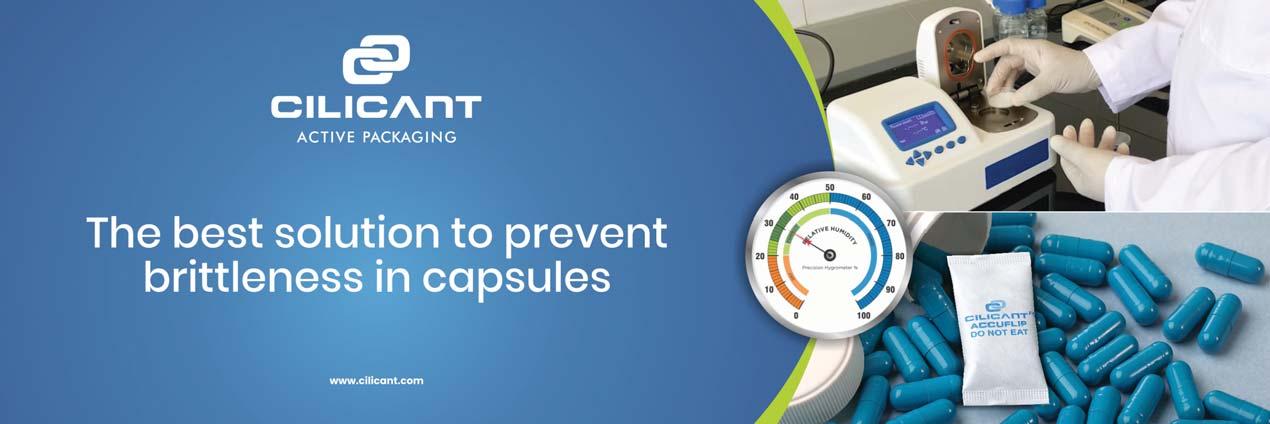
P22: INTERVIEW
KAIVAAN MOVDAWALLA Partner and Healthcare Sector Leader, EYIndia
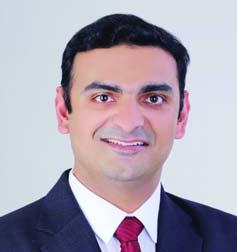
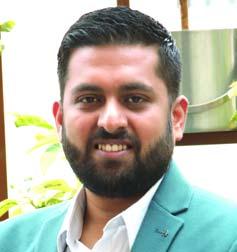


PUBLIC HEALTH
25
HOWDRONES ARE ENHANCING HEALTHCARE ACCESSIBILITYIN INDIA
26 HOWTECH IS REDEFINING THE DIAGNOSTICS SPACE IN INDIA
* Responsible for selection of news under the PRB Act.Copyright © 2017.The Indian Express (P) Ltd.All rights reserved throughout the world. Reproduction in anymanner,electronic or otherwise,in whole or in part,without prior written permission is prohibited.
May2023 EXPRESS HEALTHCARE 11
Express Healthcare®
24.Printed
Regd.With RNI No.MAHENG/2007/22045.Postal Regd.No.MCS/162/2022 -
and Published byVaidehi Thakar on behalf of The Indian Express (P) Limited and Printed at The Indian Express Press,Plot No.EL-208,TTC Industrial Area,Mahape,Navi Mumbai-400710 and Published at Mafatlal Centre,7th floor,Ramnath Goenka Marg,Nariman Point,Mumbai 400021. Editor: Viveka Roychowdhury.* (Editorial & Administrative Offices: Mafatlal Centre,7th floor,Ramnath Goenka Marg,Nariman Point,Mumbai 400021)
The tussle for Care Hospitals
The long-awaited Cabinet approval of the National Medical Devices Policy got the thumbs up from industry leaders across the spectrum, for various reasons. Global medical device makers sense an opportunity to increase their access to the Indian market, and we could see increased investments from these players, who may have been in wait-and-watch mode after the first flush of fund infusions a couple of years back.
On the other hand, local medical device/ medical technology makers hope the Policy will serve their strategy of making India the base for medical devices manufacturing and exports. The Policy has the vision to increase the share of the Indian medical devices industries to 10-12 per cent globally over the next 25 years, from the current 1.5 per cent.
It is hoped that the Policy will lay the basis for this strategy, with its emphasis on skilling. While India's share of the global medical device market may be a miniscule 1.5 per cent, Indians are already eight per cent of the global medtech R&D workforce. Industry experts are seeing these stats as a clear indication of an existing skill set affinity that can be further honed.
Will the Policy balance the ambitions of the many factions within the medtech sector, as well as increase access to affordable medical devices and technology within the country?
On paper, it ticks all the right boxes: regulatory simplification, infrastructure development, R&D, innovation facilitation, investment attraction, human resource development, and brand positioning.
While both sides are still perusing the fine print of the Policy, a lot will depend on the implementation and interpretation. As is the case with any policy directive.
For instance, take the recent revision in the Central Government Health Scheme (CGHS) package rates by the Union Ministry of Health and Family Welfare. Analysing the impact on hospital revenues, Mythri Macherla, Assistant Vice President & Sector HeadCorporate Ratings, ICRA expects that with these upward revisions in rates, hospitals would witness an increase in realisations from CGHS patients, who typically account for ~3-6 per cent of total footfalls for most large hospital chains.

Given that the revision is long overdue, it still falls short of tackling key pain points. The ICRA statement notes that the receivable period for such government schemes remains higher as compared to other payor categories such as cash/international patients and insurance companies. One hopes that policymakers go all out to make the National Medical Devices Policy a game-changer for the sector.
The interest generated by the approval of the National Medical Devices Policy is indicative of the long-term interest in India's healthcare sector. In his Q4 forecast, a report from Sriraam Rathi, analyst –Healthcare and Pharmaceuticals, BNP Paribas India thinks hospitals are in a 'sweet spot', well positioned to deliver double- digit revenue grow th on improving occupancy, a steady rise in ARPOB and bed additions. EBITDA margin has improved in the post-COVID era due to higher ARPOB and rationalised costs, which it expects to continue.
Thus, the continued consolidation in India's hospital sector is not a surprise, as investors double down to acquire more market share.
Pegged as the largest deal so far by a PE fund in the hospital sector, early April saw Temasek, directly and through subsidiary Sheares Health, up its stakes to 59 per cent in Manipal Hospitals. In perhaps a sign of the times, the promoter family ceded control while retaining 30 per cent.
Keeping the faith in India's healthcare sector, PE/VC investors are tipped to be driving more such deals this year. However, there is a flip side to these market moves. While everyone loves a mega-merger, spurned suitors could play spoilt sport.
More recently, in end April, Max Healthcare took TPG to court for allegedly breaching a term sheet agreement. Simply put, while Max Healthcare was courting Care Hospitals, Care Hospitals' PE investor TPG, allegedly continued to look around for a better suitor and concluded that Blackstone's offer was better.
With the Bombay High Court appointing a retired judge as arbitrator of the dispute at the first hearing on May 3, there is always the possibility that the concerned parties negotiate a solution to avoid yet another protracted legal battle.
While investors are lining up for a slice or sliver of India's corporate hospital pie, what will it take for some of this faith to rub off on India's public hospital segment? Public Private Partnerships in this sector haven't served the purpose so far.
And zooming out, how and when, will these mega mergers and smaller buyouts translate into more affordable patient care across the spectrum of India's vast demographic and geographic profile? With apologies to Bob Dylan, the answer to that is still blowin' in the wind.
VIVEKA ROYCHOWDHURY Editor viveka.r@expressindia.com viveka.roy3@gmail.com
EDITOR’S NOTE EXPRESS HEALTHCARE May2023 12
The TPG-Care Hospitals and Blackstone deal could result in yet another mega-merger, but spurned suitor Max Healthcare could play spoilt sport

























As industryevolves,so must its practitioners - understanding both trends and technologyare key
With over three decades of experience in clinical operations,medical administration,and healthcare management, Col Anuradha Sangal (Retd.) ,Head of Clinical Operations,Dozee is an expert in healthcare.Aformer Medical Officer in the Indian Army Medical Corps,she has extensive experience in managing and supervising medical care of army personnel and their families,as well as providing medical support during military operations.In an interaction with Kalyani Sharma ,Col Sangal shares her journey from the Armed forces to health tech and throws light on digitisation of healthcare
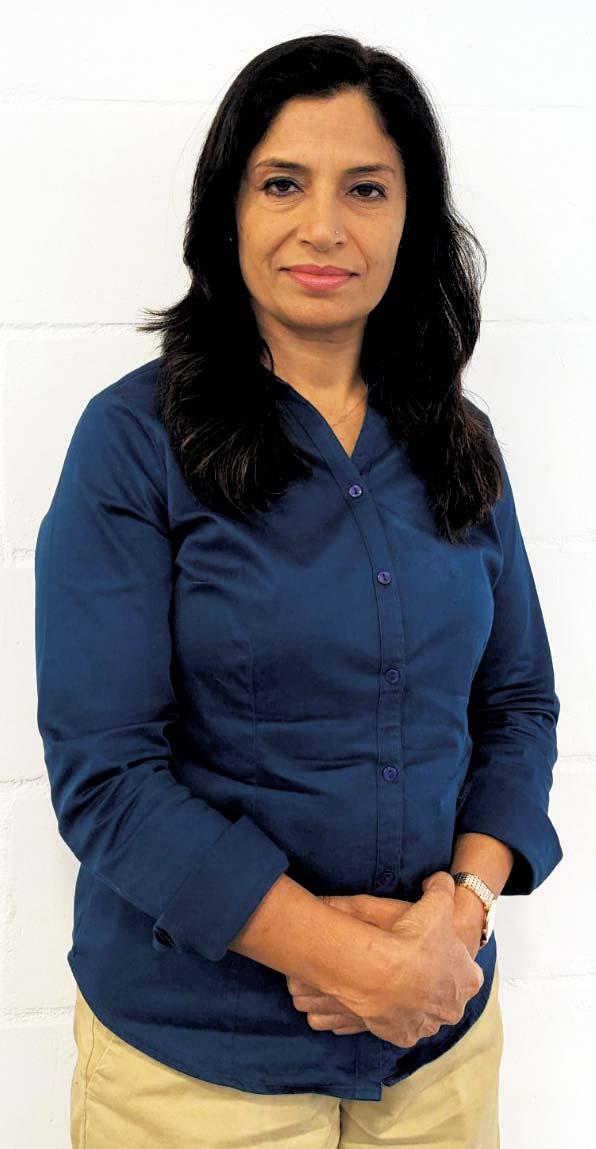
What inspired you to transition from armed forces to the health tech sector? Please share your journey.
As a healthcare professional in the Armed forces, I had dedicated 30 years of my life towards optimising patient outcomes. But there was still a sense of unfulfilled potential; I felt that by leveraging technology, I could make an even bigger impact and reach a wider scale than what is possible working solely from within the Armed forces. This led me to explore how technology can be used to improve healthcare systems and lead to better patient outcomes. By leveraging my considerable experience and knowledge, I found myself well-positioned to contribute to the development and refinement of technology related to healthcare delivery.
The exposure of having served in the army allowed me to develop a distinct perspective on providing care. I believe it has adequately equipped me to bring about change on a wider scale and observe improved standards of patient care delivery across the healthcare landscape of the country. Being aware of the existing gaps in our current healthcare system, I know technology can be the solution here and I want to play my part in helping with
its adoption and implementation.
Being given the chance to explore unfamiliar roles and responsibilities in the world of health care technology has been an invaluable opportunity for me. My passion lies in using technology to promote better health outcomes, which I have been able to do here with flying colors. With each new task I tackle, I become even more excited about the potential for innovation in this field. Moreover, it is a rewarding experience that helps me grow as a professional and a person.
How crucial was the role of the pandemic in accelerating the use of digital health? How scalable is it right now? The novel coronavirus pandemic has been a major factor in driving the expansion of digital health, with governments and companies around the world implementing solutions to help reduce the risk of infection and keep people safe.
The use of remote patient monitoring, for example, has skyrocketed during this time as hospitals look for ways to safely provide healthcare services. The sudden need to find innovative solutions that could ensure safety while still offering quality care has
highlighted just how crucial digital health can be in providing efficient care at scale.
As a step to riding the wave of change catalysed by the pandemic, the Indian government also took several steps to promote digital health. Initiatives such as the National Digital Health Mission (NDMH) and the launch of the Aarogya Setu app have helped increase the awareness and adoption of digital health solutions.
While as a nation we are aggressively adopting technology to improve the accessibility of healthcare, the scalability of digital health in India depends on various factors such as infrastructure, regulatory framework, and user adoption. India has made significant progress in digital health, but there is still a long way to go in terms of reaching the masses, particularly in rural areas where factors such as internet connectivity and access to technology continue to be a challenge.
However, with the increasing availability of smartphones and the government's efforts to improve digital infrastructure, the potential for digital health to scale up is significant. Digital healthcare solutions truly have the potential to improve healthcare outcomes, reduce costs and increase
EXPRESS HEALTHCARE May2023 14
HEALTHCARE IT
INTERVIEW
access to quality healthcare services in the country and worldwide.
Which global technologies should be a part of the Indian healthcare system for better patient care?
India's healthcare system is one of the largest and most complex in the world, serving more than 1.3 billion people. In recent years, technology has become increasingly important in healthcare, as it can facilitate faster diagnoses, smoother communication between health professionals and patients, and improved access to care for rural and underserved populations. To ensure quality care to all those who need it, India should consider implementing several global technologies that can improve its healthcare sector. However, the growing number of health tech startups and innovations in India are offering worldclass healthcare solutions paving the way for an Atmanirbhar Indian healthcare system offering unparalleled patient care and safety. The day is not far when ‘Made in India’ technologies in healthcare will set an example for the world to follow.
Which all areas, according to you, are yet to be explored as far as digital health is concerned?
Digital health is a rapidlyexpanding field with new innovations being developed on a daily basis. Medical technologies and applications that use digital resources to enhance patient care, monitoring, and treatment have been utilised by healthcare systems around the world. While these advancements have already accomplished great strides in improving the quality of care available to patients, there are still many areas in which further innovation can be achieved. One such area is the use of BlockChain technology to secure patient data and enable the secure sharing of information between healthcare providers. This can improve the accuracy and efficiency of healthcare
delivery, without compromising patient privacy.
The use of Virtual Reality (VR) and Augmented Reality (AR) can enable healthcare providers to simulate medical procedures and training, improving the quality of healthcare education. VR also has the potential to transform healthcare by allowing patients to experience interactive healthcare. For instance, VR can be used to simulate surgical procedures, train healthcare professionals, and even help patients manage chronic pain.
Further, while AI is being used in healthcare to some extent, there is a lot of untapped potential in this area. AI can revolutionise healthcare by improving diagnosis and treatment, predicting patient outcomes, and enhancing personalised medicine. The use of predictive analytics and AI algorithms can help identify disease outbreaks and predict patient outcomes, thus enabling more efficient allocation of healthcare resources.
In the same vein, digital therapeutics is another area in healthcare that needs to be explored. Digital therapeutics are software-based treatments that can be used to treat medical conditions. These treatments can be used alone or in conjunction with traditional medical treatments, and they have the potential to be more accessible, cost-effective, and personalised than traditional treatments.
And finally, advances in genomics are opening up new opportunities for personalised medicine. Digital health solutions can be used to analyse genomic data and develop personalised treatment plans for patients
based on their unique genetic makeup. Exploring these uncharted areas of digital healthcare can help improve patient outcomes and increase access to healthcare services.
What are the major challenges and gaps faced by the healthcare system while going through the process of adopting a technology?
The healthcare system today is facing many challenges and gaps in the process of adapting technology for the betterment of patient care. Since its inception, this transformation has been fraught with difficulties ranging from financial constraints to legal restrictions. Moreover, the complexity of the systems and processes involved in bringing new technology into a healthcare setting can be daunting. In order to make progress toward developing a more efficient and effective healthcare system, it is essential for organisations to identify these challenges and gaps in order to develop solutions that are tailored to their particular situation.
One of the main challenges is the lack of infrastructure and resources in many parts of the country, particularly in rural areas. This hinders the adoption of technology and makes it difficult to provide healthcare services to disadvantaged communities.
The lack of standardisation and interoperability of digital health systems makes it difficult to share patient information between healthcare providers across different healthcare facilities. Moreover, the Indian healthcare system faces a shortage of skilled healthcare professionals who can effectively use technology to improve patient care. Data
security and privacy concerns are also a challenge, with the need to ensure that patient data is kept confidential and protected from cyber threats. Further, the cost of implementing and maintaining technology infrastructure is a significant challenge for many healthcare providers, particularly for those operating in resourcelimited settings. Another aspect worth mentioning is user adoption. Healthcare providers and patients may be hesitant to adopt new digital health technologies due to a lack of familiarity or scepticism about their effectiveness. There is a need to educate and train healthcare professionals and patients about the benefits and proper use of these technologies. Further intensifying this stumbling block is interoperability, which implies issues with compatibility and integration between different digital health technologies, making it difficult to share and analyse patient data across different platforms. The cost of implementing and maintaining health technologies is also a significant barrier. Regulatory barriers in obtaining approvals can be a complex process, and the digital divide is also an obstacle that is slowing down the successful adoption of technology in the Indian healthcare system. Overall, addressing these challenges and gaps is critical to ensure that digital health technologies are effectively integrated into the healthcare system.
How do you see the current skill development scenario in India, especially now that new technologies are being used?
Healthcare is rapidly changing
as new technologies are being developed and utilised to improve patient outcomes. The skill development required to keep up with these advances has become increasingly important in order to maintain quality care. Whether this be through extra education, additional online courses, or hands-on experience through shadowing a colleague, staying current is imperative for healthcare professionals. As the industry evolves, so must its practitioners - understanding both trends and technology are key when it comes to providing the most effective treatment today and into the future. However, the healthcare sector in India is still facing a shortage of skilled healthcare professionals, particularly in rural areas. The adoption of innovative technologies in healthcare, such as telemedicine, requires healthcare professionals to have specialised skills and training. Therefore, there is a need to develop a workforce that is equipped with the necessary skills to use and implement these technologies effectively.
In recent years, there has been a growing focus on digital skill development in India. The government has launched several initiatives, such as the Digital India campaign, which aims to provide digital literacy and skills training to people across the country. There are also several private sector initiatives, such as Corporate Social Responsibility (CSR) programmes and publicprivate partnerships, aimed at promoting digital literacy and skill development. Initiatives such as healthcare-specific training programmes, continuing education programmes, and targeted government policies aimed at promoting healthcare skill development can also help equip healthcare providers to better adapt to a healthcare system that is gradually integrating itself with technology.
kalyani.sharma@expressindia.com journokalyani@gmail.com
May2023 EXPRESS HEALTHCARE 15
While as a nation we are aggressively adopting technology to improve the accessibility of healthcare,the scalability of digital health in India depends on various factors such as infrastructure, regulatory framework,and user adoption

EXPRESS HEALTHCARE May2023 16 cover )
Integrating genetic testing into public health settings has the potential to reform healthcare delivery.Making it affordable needs better strategies




 ByKalyani Sharma
ByKalyani Sharma

May2023 EXPRESS HEALTHCARE 17
NHS explains that genetic testing, sometimes called genomic testing finds changes in genes that can cause health problems. It's mainly used to diagnose rare and inherited health conditions and some cancers.
Genetic testing can play an important role in managing the rising burden of various diseases like diabetes, certain types of cancer and others by eliminating the need for unnecessary checkups and screening tests and directing the person towards the best available options for prevention, treatment and monitoring the condition.
Raghavendra Goud Vaggu, Global CEO, EMPE Diagnostics also believes that “Globally, as genetics or the study of genes and their impact on human health and diseases continue to make advances, genome testing has come to acquire increased salience and traction. With time, it has moved from confined research environments to more active clinical diagnostics and clinical care settings. And India has been no exception. The pandemic has prompted a sharpened focus on preventive health in the country. And among preventive diagnostic techniques and methods, genetic testing has increasingly found more takers. As a country with a high genetic disease burden on account of its high population and the practice of consanguineous marriages in certain regions and communities, India is natural genetics testing market.”
Is it possible to incorporate genetic testing in public health settings?
The affordability and accessibility of genetic testing is a big issue. However, with the overall rise in healthcare cost and decline in quality of life, preventive healthcare needs more focus and genetic testing has the potential to nip several healthcare challenges in the bud.
Answering if its possible to incorporate genetic testing in
Genetic counseling and education programs can be integrated into public health settings to provide individuals with information about their genetic risks and help them understand the implications of genetic testing,and guide them in making informed decisions about preventive measures
Amol Naikawadi Joint Managing Director, Indus Health Plus
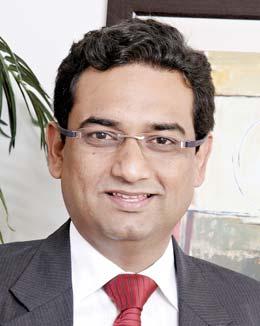

Governments can invest in genomic research to identify genetic risk factors for chronic diseases in their populations and use this information to develop targeted prevention and treatment programs
Dr Aparna Rajadhyaksha M.D.,M.B.A,

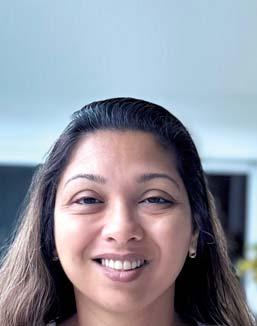 Metropolis Healthcare
Metropolis Healthcare
Improving the ease of use of the genomic tests and making them accessible pan-India,will also help improve access and contribute to democratisation of genomic testing
Anu Acharya CEO, Mapmygenome
Dr Gautam Wankhede Director-Medical Affairs, Mylab Discovery Solutions
public health settings, Amol Naikawadi, Joint Managing Director, Indus Health Plussaid, “Yes, incorporating genome testing in public health settings in India is indeed possible and can have several potential benefits. Preventive genetic testing has the potential to revolutionise healthcare in India by enabling early detection and intervention for various health conditions with genetic component like diabetes, cardiovascular diseases, PCOS, and thyroid. Genetic counseling and education programs can be integrated into public health settings to provide individuals with information about their genetic risks and help them understand the implications of genetic testing, and guide them in making informed decisions about preventive measures. These programs can be implemented in various settings, such as primary care clinics, community health centers, and public health campaigns, to increase awareness, knowledge, and utilisation of genetic testing for preventive purposes.”
One of the main advantages of integrating genetic testing into public health settings in India is the ability to identify individuals who are at a higher risk of developing certain diseases. For example, certain genetic mutations are known to increase the risk of breast cancer, and identifying individuals with these mutations can help to ensure that they receive appropriate screening and preventive measures. Similarly, genetic testing can also be used to identify individuals at risk of developing other diseases such as diabetes, heart disease, and certain neurological disorders.
Explaining its role in oncology and diabetes,Dr Aparna Rajadhyaksha M.D., M.B.A, Metropolis Healthcaresaid, “Genomic testing can also be useful in oncology. By understanding the genetic mutations and signatures of various types of cancer, researchers can develop targeted therapies and improve treatment outcomes. Governments can invest in research to identify genetic
EXPRESS HEALTHCARE May2023 18 cover )
Due to increasing awareness among healthcare providers,clinicians and patients,there is now more willingness to opt for genetic testing
markers for cancer specific to their population and use this information to develop personalised treatment plans for patients. A national database of genetic information related to cancer could also be useful for research and clinical decision-making.”
“Another critical area where genomic testing can be utilised is to identify genetic risk factors for chronic diseases such as diabetes. Understanding the genetic basis of these diseases can help researchers develop better prevention and treatment strategies. Governments can invest in genomic research to identify genetic risk factors for chronic diseases in their populations and use this information to develop targeted prevention and treatment programs”, she added.
Another benefit of integrating genetic testing into public health settings is the potential to diagnose genetic conditions in children. Many genetic conditions are inherited from parents and can lead to a range of health problems, developmental delays, and disabilities. Early diagnosis of these conditions can help to ensure that affected children receive appropriate treatment and support, which can improve their quality of life and longterm outcomes.
In addition to these benefits, integrating genetic testing into public health settings in India can also help to improve the accuracy of diagnoses and treatment plans. For example, genetic testing can help to identify the specific genetic mutations responsible for a particular disease or condition, which can help healthcare providers to develop more targeted and effective treatment plans. This can lead to better outcomes for patients and reduce the need for trial-anderror approaches to treatment.
Will the volumes entice players to make D2C genetic testing more affordable?
The large and diverse
With the increase in the volume of genetic testing,the economics of scale comes into play by making it more cost-effective
Dr Amrit Kaler Consultant,Molecular Pathology and Genomics,Kokilaben Dhirubhai Ambani Hospital

Costs of genetic testing will eventually decrease as economies of scale increase,but significant R&D and indigenisation will be needed to get costs down to the point where extremely large-scale democratisation is feasible
Anand K CEO, SRLDiagnostics

The regulatory environment for D2C genetic testing is still evolving and can vary across countries,with some countries imposing stricter rules and standards that may increase costs and barriers to entry
Sachidanand
Upadhyay
MD & CEO, Lord’s Mark Industries
population in India represents a significant market opportunity for companies offering genetic testing services. By providing affordable and accessible D2C genetic testing options, companies could tap into this market and potentially achieve economies of scale that could help to further drive down prices
The volumes of genetic testing in India could entice players to make direct-to-consumer (D2C) genetic testing more affordable. With the rise in awareness and more people opting for genome testing, the demand for testing options is likely to increase, which could lead to increased competition among providers and lower prices for consumers.
Dr Rajadhyaksha said, “Genetic testing is not yet developed enough to be offered as D2C testing in India, so the question of whether volumes will entice players to make it more affordable may not be immediately relevant. However, if and when genetic testing does become advanced and accessible, there is potential for D2C genetic testing to be offered in India. Infectious diseases could be an area where D2C genetic testing could be beneficial. With high volumes of infectious disease cases in India, there could be a demand for rapid and accessible testing. D2C genetic testing for infectious diseases could potentially help patients obtain appropriate care in a timely manner. However, it is important to ensure that any D2C genetic testing services are accurate, reliable, and adhere to appropriate ethical and privacy standards.”
Dr Arjun Dang CEO, Dr Dangs Lab
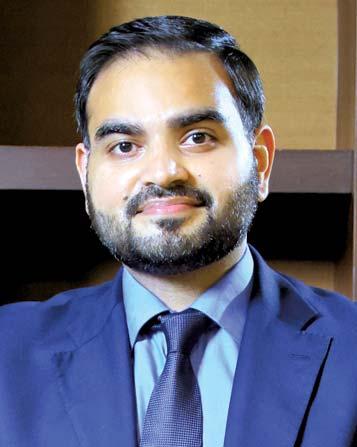
According toDr Gautam Wankhede, Director-Medical Affairs, Mylab Discovery Solutions, “The D2C genetic testing industry is fragmented, comprising a few big players and small start-up companies offering D2C genetic tests at lower costs. The rise in the prevalence of chronic diseases, technological advancements in next-generation sequencing and the introduction of
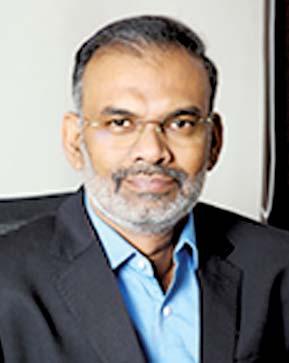
May2023 EXPRESS HEALTHCARE 19
Analysing genetic data is a complex process,and the tools required to do so can be expensive.These challenges need to be negotiated to provide affordable genetic testing
personalised testing kits for niche therapeutic areas will aid the rapid expansion of DTC genetic testing, which will lead to cost reduction of tests. Due to increasing awareness among healthcare providers, clinicians and patients, there is now more willingness to opt for genetic testing both to identify the underlying cause of disease and to better understand the treatment options. This has also gone beyond just disease diagnosis now such as athletes using information from genetic testing to decide the best training regimes for optimum physical performance.”
Dr Amrit Kaler, Consultant, Molecular Pathology and Genomics, Kokilaben Dhirubhai Ambani Hospital, “With the increase in the volume of genetic testing, the economics of scale comes into play by making it more cost-effective. The cost of genetic testing is based on the cost of equipment and supplies, the complexity of the testing process, and the need for skilled personnel to interpret test results. The number of genetic tests can be increased by awareness of its implications. Education about the personalised medicine can help to understand the disease process and motivate people to get themselves genetically tested.
The present era of genomics in research and development is definitely taking a turn towards patient centric diagnostic protocols. For example, the identification of health conditions like cancer or cardiovascular diseases, and neurological diseases can accessorise patients with the right genetic test with the help of trained geneticists, which also can decrease the burden of unnecessary data generation.
To prevent the burden of genetic disorders, routine screening of high-risk pregnant women can be made available to the general population to help identify genetic risks early. In cancer patients, genomic testing can predict optimal chemotherapy regimens, or predict the likelihood
of drug response or toxicities and avoid exposing patients to ineffective or overly toxic regimens.”
Talking about the cost, Anand K, CEO, SRL Diagnostics added, “Costs of genetic testing will eventually decrease as economies of scale increase, but significant R&D and indigenisation will be needed to get costs down to the
point where extremely largescale democratisation is feasible. For this to happen, the government needs to incentivise R&D for genomics and also create new avenues for industry academia collaboration.”
However, there are also factors that could limit the affordability of D2C genetic testing in India. For example, the cost of developing and maintaining
there are factors that may limit the impact of volumes on affordability, such as the regulatory landscape, ethical considerations, and customer preferences. He said, “The regulatory environment for D2C genetic testing is still evolving and can vary across countries, with some countries imposing stricter rules and standards that may increase costs and barriers to entry. Some customers may also prefer to consult with healthcare providers before or after taking a D2C genetic test, which may add to the overall expenses of testing. Additionally, ethical considerations around data privacy and the use of genetic information may also affect the affordability of D2C genetic testing. One potential solution is to leverage the advancements in artificial intelligence and cloud computing to reduce the cost and complexity of genomic analysis. Machine learning algorithms and distributed computing platforms can process large amounts of genomic data faster and more accurately, enabling more people to access genomic testing services through online platforms or mobile devices.”
Overall, while the volumes of genetic testing in India could potentially entice players to make D2C genetic testing more affordable, there are several factors that could impact pricing and accessibility. It will be important for companies to carefully consider these factors as they develop and implement their strategies for offering genetic testing services in India.
the necessary infrastructure for genetic testing may be high, and regulatory hurdles could add to the cost of doing business in India. Additionally, there may be cultural barriers to the adoption of D2C genetic testing, which could limit demand and impact pricing.
Sachidanand Upadhyay, MD & CEO, Lord’s Mark Industries highlightsthat
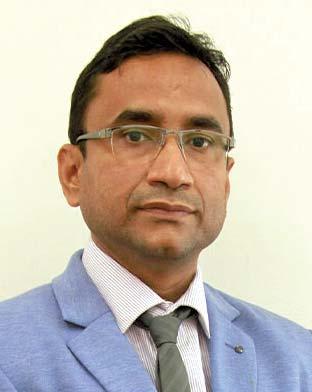

Dr Arjun Dang, CEO, Dr Dangs Labconsiders investment, expertise and complexity as some of the challenges in making genetic testing affordable. He explains that developing new genetic tests and technologies requires significant investment in research and development. These costs can be passed on to consumers, making testing more expensive. Genetic testing involves complex processes, and the cost of these processes can be high. It can also require

EXPRESS HEALTHCARE May2023 20 cover )
Efforts such as government funding, insurance coverage,and partnerships with private companies could make the testing more affordable to people
Dr Prashant Kumar Chief Scientific Officer, Karkinos Healthcare
Democratising genomic testing in India is essential to ensure everyone can benefit from its potential
Dr Amrutraj Zade Principal Scientist, Head of R&D, HaystackAnalytics
The pandemic has prompted a sharpened focus on preventive health in the country.And among preventive diagnostic techniques and methods, genetic testing has increasingly found more takers
Raghavendra Goud Vaggu Global CEO, EMPE Diagnostics
specialised equipment and highly trained professionals to conduct the tests. Interpreting genetic testing results requires expertise in genetics, bioinformatics, and statistics. Analysing genetic data is a complex process, and the tools required to do so can be expensive. These challenges need to be negotiated to provide affordable genetic testing.
Dr Prashant Kumar, Chief Scientific Officer, Karkinos Healthcarealso believes that “Efforts such as government funding, insurance coverage, and partnerships with private companies could make the testing more affordable to people. Attempts are required to expand the availability of genetic testing facilities to rural and remote areas as well. When the demand increases companies may be able to reduce the costs and offer more affordable pricing. However, it is important to note that the affordability of genetic testing is not only determined by the volume of testing, but also by other factors such as the cost of equipment and technology, regulatory requirements, and intellectual property considerations.”
Howdo we democratise genetic testing?
Public-private partnerships could help to bring down the
GENETIC TESTING CAN IMPROVE PUBLIC HEALTH IN THE FOLLOWING WAYS
Disease prevention: Identify people who are at increased risk for developing certain diseases,allowing for early interventions to prevent the onset of disease.Ex: People with certain genetic mutations have an increased risk for breast cancer,who can then benefit from increased monitoring or prophylactic surgery.
Precision medicine: This can help guide the selection of the most effective treatments for patients based on their genetic makeup.

Screening and diagnosis: Can be used to develop new screening tests for diseases, allowing for earlier detection and treatment.Additionally,genomic sequencing can help diagnose rare or difficult-to-diagnose conditions.
Public health research: Conduct research to better understand the underlying causes of diseases and identify new targets for treatment or prevention.
Nutrition planning: For planning meal programs
Source: Anu Acharya, CEO, Mapmygenome
cost of genomic testing by leveraging the resources and expertise of both the public and private sectors. Also, by investing in technologies, providers may be able to offer more affordable testing options. Regulations and policies can also help to ensure that genomic testing is conducted ethically and with appropriate privacy protections, which can help to build public trust in the technology. Additionally, policies that promote the use of genomic testing in public health settings may help to drive down costs by increasing demand for testing services.
By taking these steps, it may be possible to democratise genomic testing and make it more affordable in India.
Dr Amrutraj Zade, Principal Scientist, Head of
R&D, HaystackAnalytics believes that democratising genomic testing will require a collaborative effort. He added, “Democratising genomic testing in India is essential to ensure everyone can benefit from its potential. The government can take several steps to reduce the cost of genomic testing, such as creating a regulatory framework, encouraging the establishment of more genomic testing laboratories, promoting research and development in genomic testing, educating people about its benefits, regulating the cost of genomic testing, establishing a national genomic database, and providing insurance coverage for genomic testing. It is important to note that democratising genomic testing will require a collaborative effort from the
government, private companies, and the public. However, the benefits of democratising genomic testing are vast, and it is a step towards making healthcare more accessible and affordable for everyone in India.”
Considering insurance coverage as one of the ways to democratise genomic testing, Dr Kaler said, “The government and private sector can introduce insurance coverage for a middle-income population which can cover the cost of genomic testing, making it more affordable. This approach can encourage more people to undergo genomic testing in diagnosed cancer patients which will help in understanding the course of disease. The challenge faced is the difficulty of deciding when
to reimburse for genetic tests, which can be solved by getting approval or consent from the treating doctor.”
Naikawadi explainsthat encouraging local manufacturing of genetic testing kits and platforms within India can potentially reduce costs associated with importing such technologies. While affordability is important, it is equally crucial to maintain quality and standards in genomic testing to ensure accurate and reliable results. Implementing robust quality assurance measures, accreditation programs, and regulatory oversight can help maintain quality while making testing more affordable.
Acharya also highlights that improving the ease of use of the genomic tests and making them accessible pan-India, will also help improve access and contribute to democratisation of genomic testing.
Wayforward
Integrating genome testing into public health settings has the potential to reform healthcare delivery. However, making it affordable and more accessible needs better strategies and requires a collaborative effort from policymakers, providers, and the public to achieve this goal.
Kalyani.sharma@expressindia.com journokalyani@gmail.com
May2023 EXPRESS HEALTHCARE 21
STRATEGY
There is a need for frugal innovation-based healthcare solutions to achieve affordability
As per a latest EY-NASSCOM survey,47 per cent of the surveyed healthcare companies are yet to begin a planned AI journey. Kaivaan Movdawalla ,Partner and Healthcare Sector Leader,EYIndia in an interaction with Kalyani Sharma explains why healthcare is still tech wary and also emphasises on the major shifts in India’s healthcare sector
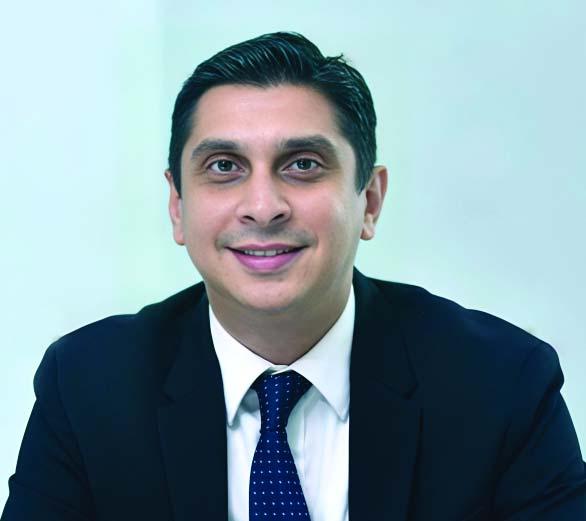
What are the major shifts in India’s healthcare sector?
The contours, the context, and the contents of healthcare ecosystem are rapidly evolving across the world. There has essentially been a fundamental shift in the imperatives for the policy makers, providers, and the public, leading to the emergence of ‘Health Outcome’ and ‘Cost of Care’ as the key performance indicators of the health system. The major shifts in India’s healthcare context are:
a) Preference towards quality beds
Post-COVID, there is a greater momentum towards “organised quality private healthcare care” with expanding middle class and unlocking of demand for the bottom of pyramid through increasing social and private insurance penetration. This momentum is expected to continue, and we are seeing a K Curve - on one end while we are seeing the organised / larger chains becoming stronger, at other end there will be gradual weaning out of smaller players to create healthcare platforms thereby driving consolidation in the segment.
b) Predicting the unpredictable
The power of data that can be unleashed by digital capabilities which can be consolidated, analysed, and leveraged for sharper intelligence and help answer questions like who will respond to which treatments, which disease will spread,
what therapies work best and most economically etc. Hence it is this data which will be the bedrock of the health system that will revolutionise advancements in the sector.
c) Shift to “Health Care” from “Sick Care”
Overwhelming focus on sick
care rather than true healthcare has been the cause of burgeoning health expenditure and increasing disease burden across the world. It is here that technology has the potential to revolutionise the possibilities in enhancing speed and accuracy of
through better outcomes and less on transaction cost, in Indian context the focus is more on reducing the transaction cost given the vast multitudes inability to absorb the prevailing cost of care. Hence in the Indian context, there is also a strong need for frugal innovation-based healthcare solutions to achieve affordability agenda. Technology can play a vital role to drive efficiency.
How are digital technologies powering a transformation across the healthcare continuum?
The last two years of COVID-19 pandemic have accelerated the growth of digitisation and technological innovation in the healthcare sector in India.
diagnosis and treatment, remote access, and real time monitoring.
d) Shift from an incremental to a design to cost approach in healthcare delivery
While the cost agenda in the global context is largely focussed on life cycle cost
From the ambitious healthcare initiatives of the Union government like the Ayushman Bharat Digital Mission (ABDM) and the National Health Stack to technological innovations like healthcare omnichannel platforms by many private players, telemedicine consultations in the public and private sectors, artificial intelligence-based IoT tools for diagnosis, targeted treatments, and remote monitoring, the healthcare sector is moving from inperson care only to phygital (physical + digital) care. Along with these, trends like 5G, generative AI, digital twins, and metaverse are all set to create an entire range of new channels for delivering care that have the potential to lower cost of care and vastly improve access, affordability, clinical outcomes and patient experience.
EXPRESS HEALTHCARE May2023 22
INTERVIEW
AI will take its own time to reach a stage of maturity and a tipping point in healthcare where it starts bringing in significant measurable benefits for the organisations leading in its adoption
As per a latest EYNASSCOM survey, 47 per cent of the surveyed healthcare companies are yet to begin a planned AI journey. Why is healthcare still tech wary? What can be done to increase the rate of AI adoption in healthcare? AI will take its own time to reach a stage of maturity and a tipping point in healthcare where it starts bringing in significant measurable benefits for the organisations leading in its adoption. Some of the key challenges in adoption of AI in healthcare are as follows:

◆ Data protection and privacy
With an accelerated pace of digitisation in healthcare, there comes an increase of risk of cyber-attacks and data loss. Recent cyber-attacks of medical institutions have alerted the healthcare stakeholders to reassess and bolster their defences as they open up their applications and databases to the internet. It is critical to have comprehensive data privacy regulations and cyber security requirements in India for all industries including healthcare, which will encourage deployment of resources by organisations in this area and enable faster adoption of digitisation and AI.
◆ Resistance to change coupled with perception of job replacement by AI Healthcare is complex with
multiple stakeholders involved in provision of services including the caregivers (nurses/technicians), clinicians, payors, etc. Their understanding of AI is synonymous with replacement of human resources by technology fuelling resistance to adoption. It will be important to continuously educate the key stakeholders on how digitisation and AI can help improve their efficiency and effectiveness in their daily jobs and hence enabling them for delivering better outcomes.
◆ Limited availability of skilled manpower
Understanding of how AI can help in improving delivery of healthcare is still a boardroom discussion at present. Including understanding of digital technologies and AI as part of the curriculum of healthcare courses is important to create digital and AI ready healthcare workforce of the future. Simultaneously, companies looking to adopt AI much invest in training their teams for using the technology in the intended manner and drive adoption.
◆ AI and digitisation are behind other investment priorities
Given the investment focus of most healthcare providers in India has been on capacity expansion (given high demand supply gap) and improving
ROCE (faster revenue/volume ramp up and cost reduction), AI and digitisation has lagged behind on the priority list given its evolving phase and limited visibility on ROI from digital initiatives. It is critical for healthcare players to continue to maintain a positive momentum towards investing in digital technologies and AI with clear objectives around making healthcare more affordable, accessible, trusted, and patient centric.
What are the major learnings that can be incorporated from other sectors in terms of use and scalability of AI and other emerging technologies?
There are multiple learnings and use cases of AI and other emerging technologies in other industries which can be looked up by healthcare sector. Some of the examples could be as follows:
Pharmaceutical sector has made significant strides into adoption of digital and emerging technologies to transform their engagement models with the doctors and patients. Today’s pharmaceutical companies are sharing information on new formulations through digital channels and enabling their in-person interactions with digital tools to make them much more effective. Similarly, retail and ecommerce platforms use analytics and AI for understanding consumer
behaviour and preferences and providing personalised recommendations and engagement. With the availability of right data sets, the same can be applied to healthcare for personalised health and wellness advice.
Financial services sector has re-imagined the customer journey and making it fully digital and seamless by adopting AI and data analytics at scale, dramatically improving service delivery and customer’s experience. In healthcare, while there has been some progress in digital enabling appointment booking, access to reports/medical records, etc, there is a need to rethink the end-to-end patient journeyspanning across wellness, emergency care, outpatient care, in-patient care and at home care - and bring in an integrated ecosystem of digital interventions at each step to help the patient navigate through seamlessly. E-commerce and manufacturing sectors have adopted emerging technologies including analytics, robotics and AI for end-to-end supply chain planning and management while bringing in significant cost efficiencies, predictability, and visibility for all stakeholders through the process. As healthcare has the same key resources – man, material, machines, and infrastructure –comprehensive supply chain
planning and management can be achieved across all of these through use of emerging technologies and AI.
How can use of AI in healthcare generate better economic value add? How big is this opportunity for India?
According to an article by World Economic Forum (WEF), ‘India could add $1 trillion to its economy by integrating AI in healthcare’. India is the most populous country in the world today with limited healthcare resources – both in terms of manpower (doctors and nurses) and infrastructure. Integrating AI into diagnostics platforms will enhance screening and timely identification for communicable diseases such TB and Non-Communicable Diseases (NCDs) like cancer and cardiovascular diseases. Government think-tank NITI Aayog has started testing AI applications in primary care for the early detection of chronic complications and is currently validating the use of AI based tools for screening. Further, AI and Analytics on top of anonymised public health data can also be a powerful tool for analysing disease patterns across the country and guide targeted policy intervention measures in the future.
Kalyani.sharma@expressindia.com journokalyani@gmail.com
May2023 EXPRESS HEALTHCARE 23
Developing inclusive,sustainable and resilient healthcare system for global community
The contemporary age is characterised by an evergrowing interplay of multifaceted disruptions, which originate from diverse sources and result in far-reaching consequences over extended periods of time. The vulnerabilities and limitations of healthcare systems across the globe have been exposed lately and, as a result, the need for developing an inclusive, sustainable, and resilient healthcare system is higher than ever. Life expectancy, maternal and child mortality, substance abuse, vaccination coverage, mental health, and reproductive health almost every area has witnessed some kind of improvement in the past decades.
At the same time, technology has made it possible to improve the healthcare system and make it more transparent and efficient. The application of digital health technologies aims to streamline the four fundamental objectives of healthcare: Diagnosis, Monitoring, Treatment, and Prevention. Through their use, patients are now able to acquire critical information to make informed decisions and take necessary measures to maintain optimal control of their health. This enhanced level of engagement results in a higher adherence rate to treatment regimens, which ultimately leads to improved health outcomes.
However, healthcare institutions are ill-equipped to cope with this new reality, frequently responding to each disruption in isolation, without a cohesive and integrated approach. The need for developing inclusive, sustainable, and resilient healthcare for the global community, therefore, is immense.
End-to-end transparencyin healthcare industry
Transparency in the healthcare system that comprises a
multitude of stakeholders, manufacturers, distributors, healthcare providers, and patients is imperative. This can be done by ensuring that every individual involved in the supply chain has access to the information they need to ensure the quality and safety of healthcare products.
Emerging technologies like blockchain can provide a secure and transparent platform for sharing information about the product's journey from the manufacturer to the patient. This technology ensures that the data cannot be altered, providing an accurate and transparent view of the entire supply chain.
Ensuring sustainable healthcare system
As per a study published in The Lancet Planetary Health, the healthcare industry has been found to be responsible for global environmental impacts that span a significant range, with estimates based on various indicators ranging from 1 per cent to 5 per cent of the total global impact. These impacts are driven by the resource-intensive nature of healthcare services, including the production, use, and disposal of medical equipment and supplies, as well as the energy consumption and emissions associated with healthcare facilities and transportation.
Therefore, developing a
sustainable healthcare system is crucial to ensure that the global community has access to quality healthcare services and meets the needs of the present without compromising those of future generations. It is the onus of healthcare facilities to reduce their carbon footprint by using renewable energy sources, implementing energy-efficient measures, and reducing waste. Similarly, manufacturers can adopt sustainable production practices, such as using environmentally friendly materials and reducing packaging waste. Telemedicine can reduce the need for patients to travel to healthcare facilities, reducing carbon emissions. Similarly, dig-
ital health records can reduce paper waste and make it easier for healthcare providers to access patient information, improving the quality of care.
Building a resilient healthcare system
Building a resilient healthcare system is crucial to ensure that it can withstand shocks and provide quality healthcare services during emergencies. The COVID-19 pandemic has highlighted the importance of having a system equipped with the tools necessary to account for variables. The healthcare industry can contribute to building a resilient healthcare system by adopting innovative solutions and building partnerships to improve healthcare services.
Artificial Intelligence (AI) and Machine Learning (ML) can help healthcare providers to diagnose and treat patients more efficiently, reducing the burden on healthcare systems. Partnerships between healthcare providers and technology companies can facilitate the development of innovative solutions to address healthcare challenges.
The sustainability of growth is contingent on its ability to promote the health and restoration of the natural environment, while also ensuring that it benefits a broader cross-section of society. For companies, issues of equality and justice are inextricably linked to their core values and purpose. Inclusivity is only achievable when growth meaningfully improves the lives of a diverse range of individuals, and when decisions are made with an eye towards creating a fair and equitable society. By prioritising the health of the environment and the well-being of all members of society, companies can ensure that their growth is not only sustainable but also ethical.
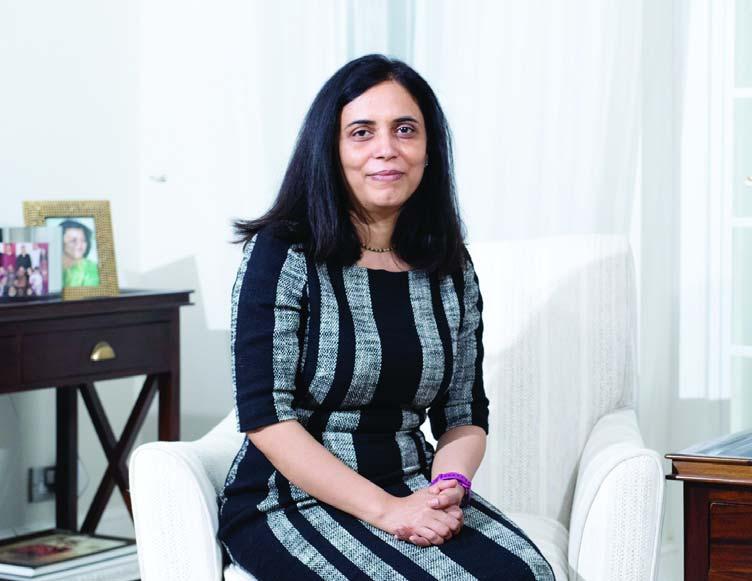
EXPRESS HEALTHCARE May2023 24
STRATEGY
Anubha Dixit,Founder & CEO,Tongadive highlights that developing a sustainable healthcare system is crucial to ensure that the global community has access to quality healthcare services and meets the needs of the present without compromising those of future generations
The COVID-19 pandemic has highlighted the importance of having a system equipped with the tools necessary to account for variables
PUBLIC HEALTH
Howdrones are enhancing healthcare accessibilityin India
crisis,the role of
The Indian healthcare sector is facing unique challenges, particularly in rural areas where limited access to healthcare facilities has been a long-standing issue. With over 70 per cent of India's population residing in such areas, drones have emerged as a promising solution to overcome access barriers and enable faster, more cost-effective, and safer transportation of medical items and test samples.
According to a report by the World Health Organization (WHO), the use of drones in the healthcare sector has the potential to revolutionise the way medical supplies and services are delivered, particularly in low- and middle-income countries where infrastructure and transportation networks are poor. The report highlights the benefits of using drones for emergency response, disease control, and the delivery of vaccines and other medical supplies.
Adeeper lookat the challenges
Although the government operates roughly 30,000 primary healthcare centres, 5-10 per cent of them are inaccessible due to geographic locations and natural disasters. Additionally, last-mile delivery remains a significant problem in developing countries, as medical supplies often get damaged, stranded, or lost en route to remote areas.
In light of the COVID-19 crisis, the role of emerging technologies, such as drones, in improving access to healthcare and medical supply chains has become more apparent than ever before. Drones have proven to be a reliable and sustainable solution, capable of delivering medical supplies,
diagnostic samples, and other essential healthcare products to the remotest areas.
The role of drones in diagnostics
Diagnostics is one of the most common uses for drones in the healthcare sector. Not every hospital or clinic has the facilities for diagnostic tests. Therefore, couriers are frequently dispatched between healthcare system structures and campuses. However, as some diagnostic procedures are time and temperature sensitive, a sample from the patient must be submitted to the lab, and the test must be completed within a certain timeframe, which might be as little as two hours. To eliminate challenges like poor accessibility to locations, drones have an important and rising role. Moreover, drones can carry a large payload in temperature-controlled boxes without compromising safety and quality.
Moreover, intra-campus delivery of diagnostic samples is enabling a faster supply chain for sample collection using drone delivery technology effectively. The technology helps with cost-effectiveness and ontime delivery with fewer hu-
man resources needed. Leveraging drone technology, healthcare providers with huge campuses can better serve their customer’s needs, thus enabling them to grow their business.
Medicine deliveryvia drones in remote areas
Digital healthcare marketplace platforms like Flipkart Health are using drone technology to enable faster delivery of medicines to the citizens of West Bengal, thus delivering preprescribed medicines and medical equipment in remote areas of the country.
Drones are faster, more sustainable, more accessible, costeffective to operate, and capable of doing multiple deliveries in a day. The COVID-19 pandemic widened the scope of drones beyond limits as Telangana launched the 'Medicine from the Sky' project to dronedeliver vaccines, medicines to remote areas. The project delivered medicines, vaccinations, and units of blood to remote, rural areas by means of drones and was a collaboration of the Telangana government, the World Economic Forum, HealthNet Global, and NITI Aayog.
Government is supporting drone deliveries
Himachal Pradesh and Uttarakhand have been pioneers in using drones for healthcare deliveries, which has resulted in better healthcare accessibility and created local employment opportunities in the drone delivery ecosystem.
In states like Himachal Pradesh, drones are helping bring better healthcare accessibility to the remotest parts of the state, helping overcome the challenges of harsh weather and terrain. It is directly benefiting over 5.19 lakh people by improving healthcare accessibility and creating local employment in the drone delivery ecosystem.
Drones have also significantly reduced delivery times and improved the quality of medical care in remote areas. For example, the drone pilot flights from Uttarkashi to Dehradun have helped to reduce the delivery time, which takes six to eight hours by road and 12 hours during a landslide, to only 1.5 hours.
Drones are using advanced technology
The drone-led delivery system is being executed through a designated cold chain professional to first load the medicine and diagnostic sample in a temperature-controlled payload box. This payload box is then loaded into the drone, which is then directed by drone pilots from the command centre through a predetermined route to a fixed destination.
Furthermore, advanced drone technologies have also completed the 100 km+ recordbreaking beyond visual line of sight (BVLOS) flight, defining commercial drone deliveries at scale in India.
Success rate of drone use in the healthcare sector has been impressive
The success rate of drone use in the healthcare sector in India can be seen in the increasing number of companies entering the drone delivery market. According to investment research firm Tracxn, India had 240 drone start-ups as of September, 2022. Out of these many companies, many are working to develop and deploy dronebased solutions for healthcare delivery, with a focus on areas such as diagnostics, medicine delivery, and emergency response.

Also, advanced drone technologies have completed record-breaking BVLOS flights, enabling commercial drone deliveries at scale in India. The drones are delivering products to hard-to-reach areas in the shortest possible time frame.
Final thoughts
The use of drones in the healthcare sector has brought a revolution to India, enabling people in remote areas to access healthcare services that were previously impossible to reach. The success rate of drone deliveries has been impressive, and the technology has proven to be a reliable and sustainable solution for healthcare deliveries. The support from the government and the adoption of advanced drone technologies have enabled the healthcare sector to overcome the challenges of accessibility and infrastructure in remote areas. The use of drones is set to grow exponentially, and it will continue to play a significant role in improving the healthcare sector's accessibility and efficiency.
May2023 EXPRESS HEALTHCARE 25
Ankit Kumar,CEO,Skye Air Mobility highlights that in light of the COVID-19
emerging technologies,such as drones,in improving access to healthcare and medical supply chains has become more apparent than ever before
DIAGNOSTICS
Howtech is redefining the diagnostics space in India
Dr Aakaar Kapoor,Medical Advisor and Chief Radiologist,City Xray & Scan Clinic explains how the tech revolution has transformed the diagnostics space in India,especially after the COVID-19 pandemic

The world of diagnostics is rapidly moving to smart digital diagnostics, and India is no longer behind in redefining this space with the advent of new-age technologies. Emerging technologies like artificial intelligence (AI) and machine learning (ML) have contributed to the overall healthcare in the past few years in the country, including diagnostics, which is heading in the direction of complete automation.
These emerging technologies have transformed diagnostic operations, besides enhancing the potential of our pathology and radiology equipment. The best part is that the tech upgrade has not made quality diagnostics expensive or exclusive but affordable and accessible. Some of the emerging technologies in the diagnostics space are IoT, AI, Blockchain, and Telemedicine.
Diagnostics form the foundation for more than 70 per cent of medical decisions
The mainstay of disease detection, diagnosis, and evaluation is diagnostics. It forms the foundation for more than 70 per cent of medical decisions involving disease management, treatment, and prevention. Diagnostics is also a vital component of preventative healthcare. This makes technology penetration a must in this space.
Let us have a look at how the tech revolution has transformed the diagnostics space in India, especially after the COVID-19 pandemic.
COVID-19 played a catalyst in redefining the diagnostics space in India
The recent COVID-19 pan-
demic was a great example of how disruptive technologies left their mark on healthcare. The healthcare industry has undergone a sea change, from remote consultations to online delivery of medicines to predictive diagnostics. As pathology and laboratory medicine rely heavily on technology, this offers an ideal ground for disruptive breakthroughs.
Disruptive diagnostics enabled physicians to opt for the right treatment protocol for the COVID-19 affected pa-
tients. No doubt emerging technologies have led to a diagnostic capability revolution. This will propel laboratories to the next level of patient care.
Apart from that, the emerging need for personalized treatment approaches during the pandemic has created a need for accuracy as well as precision in diagnostics. This need is being fulfilled with the implementation of AI, ML, and data analytics.
HowAI and digitalisation are changing the diagnostics landscape in India
Digital developments in today's more interconnected world are having a huge impact on the healthcare system and the field of medical diagnostics as well. As a result of the success of AI, digital diagnostics is expanding, intending to achieve effective and less expensive diagnoses, prognoses, and predictions of diseases. Technology developments have simplified, improved, and decreased the cost of diagnostic procedures. More money has been earned and the industry has benefited. Digitalisation of the market is being driven by AI
technology allows the conversion to take place on-site. In addition to that, the encouragement of a transition from manual to automated processing using cloud-based robotics and AI will significantly reduce the need for human intervention and move sample collection, sample and reagent handling, sample analysis, and diagnosis from manual to automated processing.
Conclusion
The diagnostics in India is one of the most promising industries. A growing number of hospitals, clinics, and medical facilities are implementing AI-driven applications to enhance patient care along with their diagnosis. With the de-
and robotic process automation. Digital diagnosis aids in crisis management and satisfies the ever-growing demands of those looking for top-notch medical care. The realm of clinical decisionmaking and disease is being transformed by the current generation of diagnostics equipped with digital technology.
Pathologists no longer need to send samples to the reference laboratory for examination since digital scanning
velopment of its technologies, diagnostic centers are significantly advancing the health industry. To expand their services, most diagnostic centers either work with health technology companies or adopt new technologies themselves. The adoption of AI in the diagnostic sector, a driver for rising revenues, is also enhancing diagnostic services for non-communicable disorders like heart attack, cancer, diabetes, stroke, and many other diseases.
EXPRESS HEALTHCARE May2023 26
Disruptive diagnostics enabled physicians to opt for the right treatment protocol for the COVID-19 affected patients.No doubt,emerging technologies have led to a diagnostic capability revolution







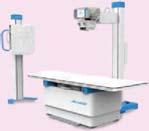




















BUSINESS AVENUES EXPRESS HEALTHCARE EXPRESS HEALTHCARE May2023 27










BlueHeaven E-mail:sales@mksilicone.com 208,HillViewIndustrialPremises, AmrutNagar,Ghatkopar(W),Mumbai-400086,India. Tel.:022-25004576Mob.:9321965968 SILICONETRANSPARENTTUBING M.K.SiliconeProductsPvt.Ltd. fortheQualityConscious…. INDIA QM002 AnISO9001-2015COMPANY Quality Products Since 1997 CERTIFIED CLEA N ROOM IS08 BUSINESS AVENUES EXPRESS HEALTHCARE May2023 EXPRESS HEALTHCARE 28 To Advertise in Business Avenues Email: rajesh.bhatkal@expressindia.com rbhatkal@gmail.com
BUSINESS AVENUES EXPRESS HEALTHCARE EXPRESS HEALTHCARE May2023 29


BUSINESS AVENUES EXPRESS HEALTHCARE May2023 EXPRESS HEALTHCARE 30

























BUSINESS AVENUES EXPRESS HEALTHCARE EXPRESS HEALTHCARE May2023 31
HEALTHCARE TRACKER
HORIBAsupports GoI initiative for bringing AI into healthcare
Express Healthcare interviewed leaders at HORIBAIndia,a subsidiary of the leading Japanese analytical group HORIBALtd.,on how this 7-decade-old global organisation supports the recent development by the Government of India (GoI) in the healthcare sector,particularly in anemia,wellness and bringing Artificial Intelligence (AI) in diagnostics.
Dr Rajeev Gautam,Corporate Officer,HORIBA,Ltd.and President,HORIBAIndia mentions the various initiatives by the organisation to support GoI,while Suparna Bhattacharyya,Chief Financial Officer and Head-Share Operations,HORIBAIndia highlights the multiple investments been done and shares the futuristic plans of the organisation to support the healthcare industry in India and SAARC
At HORIBA, we have initiated a campaign “A2A: An Approach to Anemia” with a pledge to bring awareness to an advanced and more comprehensive approach to diagnosing anemia. This campaign is an initiative to raise awareness & promote a changed, more comprehensive and retrofitted approach toward diagnosing and dealing with anemia as a health concern.
HORIBA is known for its cutting-edge technology and precision equipment. How do you foresee the need for AI in healthcare in India?
In the recent budget 2023, the GoI has planned a mission to eliminate Sickle cell anemia. How does HORIBA India look at this development?
Dr Gautam: Anemia is one of the major public health problems in India. As per the NFHS-5 report statistics, the prevalence of anemia in India is 25 per cent in men (15-49 years), 57 per cent in women (15-49 years), 52.2 per cent in pregnant women (15-49 years), 67.1 per cent in children (6-59 months), 31.1 per cent in adolescent boys (15-19 years) and 59.1 per cent in adolescent girls (15-19 years). In 2018, the Indian government launched the Anemia Mukt Bharat (AMB) strategy with the target to reduce anemia in vulnerable age groups such as women, children and adoles-cents. The center also announced a mission to eliminate Sickle Cell Anemia (SCA) by 2047.
How strongly do you believe this ‘Approach to Anemia’ campaign by HORIBA India will support government initiatives?
Dr Gautam: Generally, we only discuss Iron deficiency anemia, neglecting & underestimating all the other forms & types that continue to impact a significant portion of the nation’s population. This HORIBA India campaign of “A2A” gives a new approach and dimension to the diagnosis highlighting newer parameters such as reticulocytes, microcytes (MIC), macrocytes (MAC), nucleated RBC along with routine parameters and right interpretations of graphs and scattergrams for diagnosing, differentiating and monitoring of anemia and hemoglo-binopathies. This campaign provides an opportunity to help and support the community, in particular women and children to better understand the disease, its diagnosis and treatment.

Dr Gautam: AI in healthcare/ diagnostics will help provide access to quality medical care through the advancement of diagnostics, personalised medical care, prevention of illnesses and discovery of new treatments. AI can help minimise system inefficiencies such as over-treatment and improper care delivery, ensuring more streamlined and costeffective health ecosystems.
HORIBA India Technical Institute (HITI) which runs professional short-term and long-term courses for healthcare professionals and students. We are soon going to start the manufacturing of HORIBA Medical equipment at this ISO 9001:2015, ISO 13485:2016 and ISO 14001:2005 certified manufacturing plant. These investments by HORIBA in India will not only support the Indian economy but also open opportunities for employment for the youth.
We have seen the beginning of the use of AI for remote monitoring, during COVID-19 which has transformed the way patients are cured. AI in hematology is the new arena in IVD which will be an undisputed tool for the doctors in coming time. India’s adoption of AI into healthcare can enable it to bridge the imbalance between the increasing rural population and the lack of basic healthcare infrastructure. India can become a front-runner among emerging markets and
can meet its sustainable development goals soon.
HORIBA India Medical thought process for 2023 revolves around creating the need for products suitable for digitalisation and has collaborated with a few companies for digital cell morphology.

Healthcare is a big market for India, with its 130 billion population. What steps has HORIBA taken in India to support the Make in India or Self-reliant Bharat initiative?
Bhattacharyya: HORIBA in India has invested in two hematology reagent manufacturing plants at Haridwar and Nagpur. Both these production sites are GMP, GLP and CE certified. Spread across an area of 12 acres, the HORIBA Nagpur production facility also has a HORIBA Experience Zone (HEZ) which showcases all the latest technologies from HORIBA Medical and a
Does the Corporate Social Responsibility (CSR) policy of HORIBA India support its A2A initiative?
Bhattacharyya: The CSR policy of HORIBA India is ‘Together We Shall Grow’ and until all of us do our little to uplift the weaker sections of this 130+ billion population, our country cannot grow socially and economically. We at HORIBA have been supporting initiatives like free medical health check-up camps, healthy hygiene habits, feminine health awareness, women’s upliftment and selfdependent vocational centers which are contributing to the betterment of society. We organize periodic health checkup camps for our employees and online awareness programs for 2000+ HORIBA family members to keep them aware and conscious of various health issues like – Anemia, Blood Pressure, Obesity, etc.

EXPRESS HEALTHCARE May2023 32
INTERVIEW
Dr RajeevGautam
Suparna Bhattacharyya
We are helping clinicians improve surgical outcomes,speed up recoverytimes,and reduce complications
Sunil Khurana ,CEO & MD,BPLMedical Technologies in an interaction with Express Healthcare shares his journey of four decades with healthcare and medical device industry and talks about his plans for his company
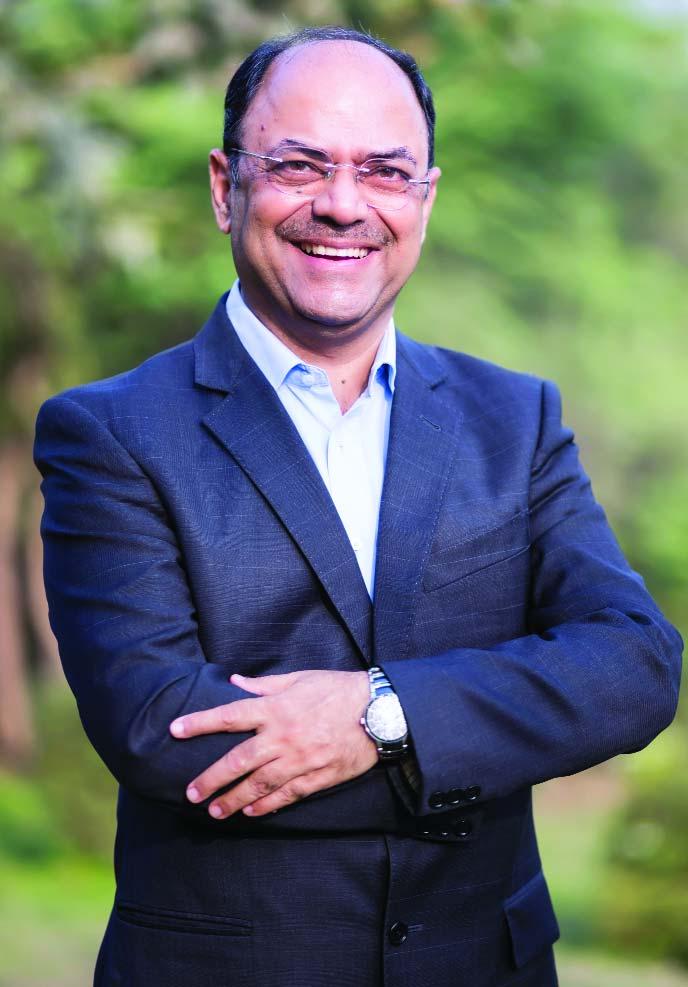
You are serving the healthcare & medical device industry for the last 4 decades. Please take us through your exciting journey so far.
As an industry professional with decades of experience in this industry, I've earned a reputation among my colleagues, clinical executives, and customers as a knowledgeable, trustworthy, and honest leader who delivers on commitments. I have a broad range of expertise in managing sales, global products, and customer service (I was VP-Service at GEHC for nearly five years), and I've stayed closely connected with customers throughout my career. This has given me a deep understanding of their requirements, as well as the market and competitive dynamics of the overall medtech industry.
In August 2013, I became the CEO and Managing Director of BPL Medical Technologies Pvt. Ltd., a home-grown medical device company that has become one of the fastest-growing companies in the country, with annualised revenue growth of over 20 per cent on a YOY basis. I strongly believe that the medical device sector in India is poised for even faster growth in the coming years, and I am excited to be part of that growth.
A short chapter of my experience between GEHC & BPL medtech talks about me as the COO and a member of the Core Executive Council at
Bharti Infratel, a leading provider of cellular tower telecom infrastructure in India. While I gained valuable experience there, my true passion lies in the medtech domain, and I have a heightened enthusiasm to create a promising Indian multinational organisation in this space. Since joining BPL Medical Technologies, I have been thrilled to see the company grow in terms of its product and service offerings. With our commitment to highquality, affordable solutions
and our strong presence in remote locations throughout India, we have earned the trust and confidence of customers in all segments.
I share the vision of our honourable Prime Minister for 'Atmanirbhar' (self-reliance) in the medical device sector through the Make in India initiative. At BPL Medical, we are continuously introducing new medical devices with the latest technology that meet our requirements and are high in quality and affordability. We are dedicated to contributing
to the growth of a promising Indian multinational organisation in the medtech space.
As a CEO & Managing Director of BPL Medical Technologies, you have taken this company to a newer height under your leadership. Please let us know about your achievements so far and future planning. As someone with several years of experience in the healthcare industry, particularly in the medical equipment sector, my ultimate goal was to establish an Indian multinational company in this space. This desire led me to join BPL Medical Technologies Pvt. Ltd. as CEO & MD in 2013. BPL MedTech is a prominent Indian multinational company known for its vast product portfolio in the medical device space, capable of fulfilling up to 70 per cent of the initial requirements of any hospital. Our history is steeped in innovation and achievement, being the first Indian company to produce ECG devices almost 50 years ago. Presently, we offer a diverse range of products spanning noninvasive cardiology, critical care and surgery, woman & child care, Imaging, and home care solutions. We are committed to enhancing our product line by incubating new products from our upcoming facilities through R&D or technology partnerships with global medtech technology players as part of the AtmaNirbhar Bharat (Self-Reliant
India) initiative in the medical device space.
Our sales and service network has expanded significantly, ensuring timely support across the country's remotest locations, making BPL Medical Technologies a one-stop solution for all healthcare-related technological needs. Our efforts have resulted in a promising growth rate, with a CAGR of over 20 per cent since 2015, and we have received numerous healthcare awards, including the TOP 10 ATTRACTIVE BRANDS 2015, CUSTOMER VALUE LEADERSHIP 2016, INNOVATION AWARD IOTNEXT SUMMIT 2015, and HEALTHCARE EXCELLENCE AWARDS 2019, among others. Additionally, we had the opportunity to provide timely support during the pandemic by delivering oxygen concentrators, ICU ventilators, and other lifesaving medical devices, contributing to saving lives and reducing anxiety among the citizens.
Regarding our future plans, the medical device sector has received substantial attention from the Government of India's PLI scheme, aimed at fast-tracking the production of medical devices locally. With a strong belief that the medtech industry will witness exponential growth in the coming years, we have applied for and received PLI for two of our categories, expediting our efforts toward creating more innovative products. Recently,
May2023 EXPRESS HEALTHCARE 33
INTERVIEW
HEALTHCARE TRACKER
we inaugurated a new manufacturing facility in Bangalore, in addition to our existing full-capacity facility in Palakkad, to establish a robust medical device manufacturing industry in India.
We envision a reduction in the current import dependence of over 85 per cent in the medical devices space, down to approximately 50 per cent over the next decade, with a minimum industry size of $50B from the current level of $12B. The medical device sector offers enormous potential for growth, with the industry projected to grow to approximately $25B in India. When India becomes the preferred destination for sourcing medical devices, we foresee the sector expanding significantly, with the possibility of exporting our products to neighbouring countries. Over the past six to seven years, we have launched several highly competitive and innovative products in India, meeting international standards, and thereby expanding our business in global markets. I am fortunate to have a supportive team that has helped us plan and execute our growth strategy, and I look forward to contributing to India's medical device sector's growth in the years to come.
BPL is one of the pioneers in non-invasive cardiology products and other radiology and imaging devices. Please elaborate on the latest advancement and
development about that. BPL has a whole range of products in this space that is upgraded based on technological advancements and customer requirements. Right from patient monitors, ECG, Holter, Treadmill and defibrillators almost all our products are undergoing significant improvements so that we can address the needs of various customer segments. We have a significant presence, customer recognition and trust in Noninvasive cardiology products. Our newly introduced monitors known as the Vivid Vue series are designed, developed, and manufactured in India with CE certification. In the diagnostic ECG, we have launched the Gen X platform with multiple variants ranging from 1, 3 to 12 channels with state-of-the-art interpretation algorithms, networking, and connectivity options. This series has been received very well by our customers.
We have developed ECG recorders, holters and imaging products that champion the cause of patient assessment in diverse use scenarios by employing a tailored-fit approach. Our modular, scalable, and upgradable configurations can be combined to form made-toorder product configurations that strive to identify and address the unmet needs of each context uniquely. We are proud to integrate state-ofthe-art technologies, such as AI-aided ECG interpretation
and advanced connectivity remote solutions, which focus on usability engineering aspects.
We have significantly invested in the design, development and manufacturing of X-Ray Radiography and C-ARM systems. Our Diagnostic XRay caters to customers requiring, a basic Analog XRay to corporate clients looking at Digital Radiography solutions. Right from 3.6KW we have solutions that can offer up to 50KW with HighFrequency Generators. We do offer mobile and fixed X-Ray solutions. Our DR solutions offer "full spine" stitching that is aided by a patient stand with associated software, as a standard offering. Different Generators, tube stands, detector stands, floating table top and multi-position tables give users various combinations that cater to all their requirements. In the CARM space, we have 1Kx1K solutions with excellent maneuverability and software that meets all expectations of Orthopaedics, Urologists. We are in the process of enhancing these products so that we can enlarge the applications to cater to a wider audience of clinicians and surgeons. By addressing each unmet need with the same level of commitment, empathy and attention, we are helping clinicians improve surgical outcomes, speed up recovery times, and reduce complications.
Do you think technology plays a major role in healthcare and in the coming days software can replace medical devices?
Of course, technology plays a crucial role in the healthcare industry, especially when compared to the outdated analog-based designs of old medical devices. While software cannot completely replace medical devices, the digital output generated through software can be quickly transferred across the globe for remote diagnosis, giving hospitals, insurance companies, and patients the privilege of having digital cloud-based lockers where these records can be securely stored.
With the aid of Artificial Intelligence, the softwaregenerated data improves the machine's ability to enable clinicians to navigate the complexities of the human body and predict the best course of action during surgical procedures, thus improving the precision of the surgery and ultimately leading to better patient outcomes.
While software can certainly be used in healthcare, it's important to note that medical devices serve a unique purpose that software alone cannot replace. Medical devices are designed to be used in clinical settings and are subject to rigorous testing and regulation to ensure their safety and efficacy. So, while technology (hardware) and software will
undoubtedly continue to shape and improve healthcare, it's unlikely that they will completely replace medical devices.
What is the global vision of BPL Medical Technologies?
BPL MedTech is committed to building a culture that focuses on creating high-quality, affordable healthcare solutions that are Made in India, for India and for the world. This shall remain our fundamental principle if we wish to embark on a global front.
Our goal is to make these solutions available even in the most remote areas of the country and around the globe. With last-mile connectivity as an integral part of our vision, we have established a robust network of sales and service distribution that is continuously strengthened to address the critical challenges faced by remote clinicians. We are proud of our achievements and owe it all to our unwavering efforts to promote a healthy world today and tomorrow. Our products and services have earned recognition and respect from our customers, and we are deeply grateful for their trust and support. As we continue on our mission to enhance "Happier Living Everyday," we remain committed to delivering the best solutions to meet the diverse healthcare needs of people everywhere.

EXPRESS HEALTHCARE May2023 34
Emerging trends in haematologyanalysis
Pravin Gundewar,Sr.Product Manager- Haematology,Sysmex India Pvt Ltd talks about the latest

in
The persistent growth of the haematology market is attributed to the increased incidences of blood disorders and increased prevalence of other diseases & infections. Rapid technological advances in hematology analysis and the emergence of high throughput haematology analysers with novel parameters has also contributed to rapid growth of haematology market.
The role of the laboratory in disease diagnosis and management has expanded in recent years and this has resulted in overwhelming rise in testing demands. The availability of skilled technologists and specialists has been also a challenge across country. This challenge of getting skilled manpower and their retention is more severe in tier 2 & tier 3 cities. To meet the needs of an overworked and mostly multitasking workforce, today’s haematology analysers not only must deliver more clinical data than ever before, but also should be easier to operate, relieving overburdened laboratory staff members of cumbersome tasks.
Haematology analyser manufacturers have answered these needs with technological evolutions in the areas of new product developments, workflow improvisation, analytical advancements, and clinical information management. Further revolutionary advancements in computing, electronics and manufacturing, along with continuous innovation in the areas of biotechnology, fluidics and mechanics, have led to a reduction in the size of analysers and increase in the speed of analysis.
All these developments have resulted in accelerated overall treatment regimen with improved accuracy and elimination of human errors. This evolution is providing the clinicians a plethora of information that was not available earlier
with routine CBC differential count and conventional haematology analysers.
We all are advancing to such a future where the haematology cell counters have ability to identify and monitor clinically significant cellular transformations and evolve as a powerful tool for management of any
medical condition which impacts blood cells. It is evident and well accepted that the advanced and efficient systems are adding indispensable clinical value to modern laboratory practices. The technologies like Fluorescence Flowcytometry not only increases accuracy and precision of testing but
also added many new parameters like Immature Granulocytes (IG#, IG%) and NRBC in routine CBC+Diff analysis. This also gives option for reticulocyte count and enumeration of reticulocyte fractions. Fluorescence flowcytometry offers option for various body fluid analysis without additional
hardware or reagents on cell counters.
The advanced haematology analyser from Sysmex, a global leader in haematology automation and frontrunner in research and development in Advanced Clinical Parameters (ACP) uses fluorescence flowcytometry in all 5 part differential haematology analysers. Sysmex provides options from standalone haematology analysers to scalable systemisation with integration of various modules like automated cell counters, slide maker and AI enabled automated cell image analysers.
AI enabled automated cell image analysers are further advancement towards enhancing capacities of hematology equipments in cell identification and reducing labour intensive manual PBS review. Morphological assessment of blood smear has been performed by conventional manual microscopy for many decades. Recently, rapid progress in digital imaging and information technology has led to the development of automated methods of digital morphological analysis of blood smears.
By pre-classifying cells using artificial intelligence algorithms, digital image analysis automates the blood smear review process and enables faster slide reviews. Digital image analyzers also allow remote networked laboratories to transfer images rapidly to a central laboratory for review and facilitate a variety of essential work functions in laboratory hematology such as consultations, digital image archival, libraries, quality assurance, competency assessment, education, and training.
Sysmex hematology systemisation is the best scalable solution for all the needs of hematology section in pathology laboratories in terms of advanced cell counting, smear making & staining and digital morphology analysis.
May2023 EXPRESS HEALTHCARE 35 HEALTHCARE TRACKER
trends
haematology analysis
The advanced haematology analyser from Sysmex, a global leader in haematology automation and frontrunner in research and development in Advanced Clinical Parameters (ACP) uses fluorescence flowcytometry in all 5 part differential haematology analysers
Sequoia Healthcare introduces the inspiration 64 Slice CTScanner
It provides exceptional CTexperience for the end users
Sequoia Healthcare, based out of Bangalore and intensely focused on driving global innova tion in the imaging solution segment manufactured indigenously in the country, has launched an advanced yet affordable Inspiration 64 Slice CT scanner with smart features and bore design recently.
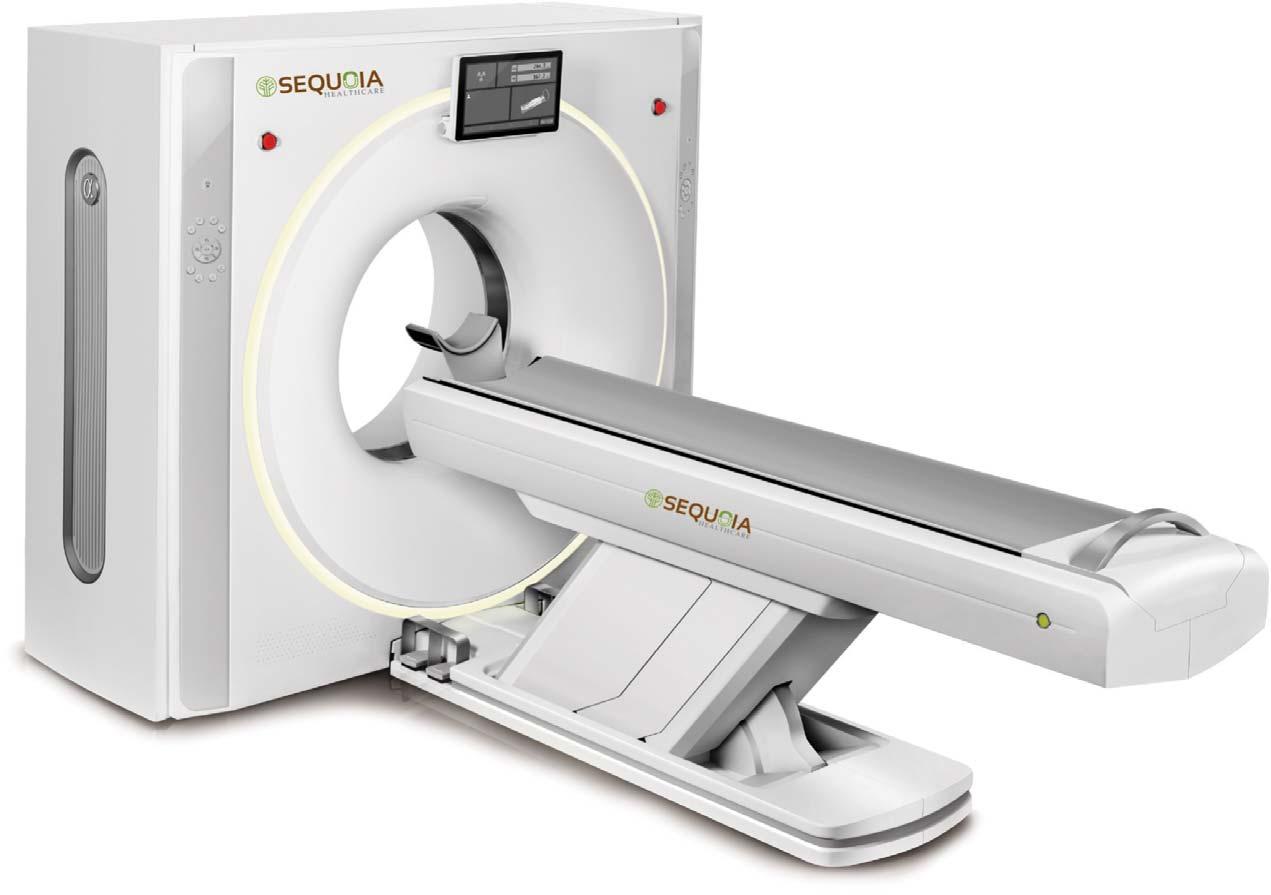
The Inspiration 64-smart large bore Slice CT Scanner
comes with a 3D vision camera with auto-positioning and remote control. It brings in the finest quality of images and stable performance consisting of innovative workflow for topogram to diagnosis by generating HD Image Chain of 024 matrix. It is a new detector design for shortening the X-RAY path and improving on the image quality with the help of a 75 cm Gantry aperture that offers extra
scan facilities as compared to the standard scanning.
According to S. Viswanathan, Chief Executive Officer, Sequoia Healthcare, “The company’s purpose is to improve the quality of human life by helping healthcare providers to do more with technology. It guides our actions and is the key to deliver our strategy. Inspiration 64’s precision tomography is independently developed in a Hi-
Resolution, High-Definition Algorithm. Inspiration 64 adopts a unique low-dose technique to minimise the radiation dose to patients, which is better known as iDream. The adequate X-Ray tube heat storage and generator capacity are increased 2.7 times with the help of iDream software.
He further said, “Sequoia Healthcare strives to bring in advanced and affordable in-
ternational technology, which serves in cost-effective healthcare. Sequoia believes in delivering radiology equipment accessibility for cost-effective healthcare. In short, we want to bring diagnostic reach to all. With high-tech services accompanied with new world Artificial Intelligence (AI), robotics, etc., Sequoia aims to become the number imaging devices manufacturer in the world.”
EXPRESS HEALTHCARE May2023 36 HEALTHCARE TRACKER
IIHMR University: Adopting newtechnologies and academic models for student-centric education
Prof.(Dr) P.R.Sodani,President,IIHMR University,Jaipur had significantly contributed to creating an organisational culture for the growth and development of the university

Prof. (Dr.) P.R. Sodani is the President of IIHMR University, Jaipur. He is a well-known Health Economist and Public Health Professor for more than two decades and mentored faculty, students, and research scholars. Professor Sodani earned Ph.D. in health economics and a Master of Public Health from the University of North Carolina at Chapel Hill, USA. He has been associated with the Department of International Health, Johns Hopkins Bloomberg School of Public Health, USA for teaching the MPH program jointly offered by Johns Hopkins Bloomberg School of Public Health and IIHMR University.
He is the Associate Editor of the Journal of Health Management, an international peer-reviewed, Scopus-indexed journal published by SAGE Publications. He is also associated with various journals of repute in the capacity of the reviewer. He is the Secretary-General of the South-East Asia Public Health Education Institutions Network (SEAPHEIN). He has published papers in indexed journals of national and international repute. He frequently writes blogs on emerging issues in the health sector.
He has organised several national and international programs for health professionals on promoting Leadership, Strategic Management, Health Policy and Management, Health Economics, Health Financing, and Hospital Management. Professor Sodani is also a CoFounder of the IIHMR Foundation for promoting start-ups. Professor Sodani has been at various levels of leadership positions and had been responsible for leading and managing academics, research, training, fundraising, and networking with national and international organisations.
The Chief Minister of Rajasthan has nominated Dr P.R.Sodani as a member of the Rajasthan State Health Mission.He is also a member of the Technical Expert Group for Institutionalisation of State Health Accounts in Rajasthan
The Chief Minister of Rajasthan has nominated Dr P.R. Sodani as a member of the Rajasthan State Health Mission. He is also a member of the Technical Expert Group for Institutionalisation of State Health Accounts in Rajasthan. In addition to this, Professor Sodani is on board with various prestigious organisations/committees for supporting academic excellence and research for policy formula-
tion. Professor P.R. Sodani is a proud recipient of many prestigious awards including the Education Excellence Award 2021 for Outstanding work in the field of Education, by the Governor of Rajasthan Kalraj Mishra.
Professor Sodani demonstrated academic leadership, visioning, policy planning, and strategic implementation. He had significantly contributed to creating an organisational
culture for the growth and development of IIHMR University, Jaipur.
IIHMR University has been established and incorporated as a postgraduate research university by the Government of Rajasthan. IIHMR University is UGC-recognised and NAAC - accredited. IIHMR University has a unique organisational culture that enshrines core values and ethos of autonomy, accountability, openness, and transparency. The multi-disciplinary teams of faculty representing public health, management, economics, statistics, demography, and social and behavioral sciences, constitute an enabling environment for learning and professional growth and development.
IIHMR University offers postgraduate and research programs including MBA (Hospital and Health Management), MBA (Pharmaceutical Management), MBA (Development Management), Master of Public Health, Master of Public Health (Implementation Science) supported by WHO-TDR, Executive MPH, Executive MHA, and Ph.D. programs. Professor Sodani strongly believes in collaborations and partnerships for promoting academic excellence and research. IIHMR University has a strong collaboration with Johns Hopkins University, USA for academic and research, offering a joint degree MPH program, and implementing a number of multi-country research programs for improving health systems outcomes.
Apart from Johns Hopkins University, IIHMR University has collaborations with Chester University, UK; University of Montreal, Canada; Curtin University, Australia; Kandahar University, Afghanistan; Management and Science University (MSU) Malaysia, Rajasthan University of Health Sciences; NHA, NHSRC, NHM Odisha, Maha-
rashtra Emergency Medical Services, Jhpiego; American Society for Quality; for academics, training, capacity building, student exchange, faculty exchange, and joint research programs.
Under the able leadership of Professor P.R. Sodani, IIHMR University, Jaipur has been recognised as a Scientific and Industrial Research Organisation by the Department of Scientific and Industrial Research, Government of India. The university is also recognised as a Host Institute (HI) by the Ministry of Micro, Small and Medium Enterprises (MSME), Government of India, for implementing the incubation component under the MSME innovative scheme. As a Host Institute, IIHMR University is eligible to submit new innovative ideas for getting financial support under the new MSME innovative scheme. He has led significant developments and major transformations in achieving an excellent ranking of the university, IIHMR University, Jaipur has been Ranked 2nd at the All-India level and 1st at the State level – Rajasthan by Education World Ranking 202223, IIHMR University, Jaipur has been Ranked in 201-300 band among all world universities ranking and 18th rank among Indian universities by Time Higher Education Impact Ranking 2022.
Prof. P.R. Sodani believes in adopting new technologies and academic models for studentcentric education to better serve the industry and society. Prof. Sodani has successfully reinforced the University's status as a world-class research university with his strong leadership and vision leading to achieving its vision and mission, by taking various new and innovative initiatives, he also established the domain of Executive Education for working professionals at IIHMR University, Jaipur.
May2023 EXPRESS HEALTHCARE 37 HEALTHCARE TRACKER
Medikabazaar launches diagnostic ecommerce platform
Medikabazaar, a leading online medical supplies company, has launched a one-of-a-kind diagnostic ecommerce platform that promises to revolutionise the buying habits of lab and diagnostic centers. The platform offers a wide range of equipment, instruments, rapid cards, consumables, and disposables, all from top brands and at the best prices. But what really sets this platform apart is its commitment to next-day dispatch, ensuring that customers receive their orders as quickly as possible.
The healthcare industry
has seen a massive shift towards ecommerce in recent years, with the COVID-19 pandemic only accelerating this trend. Medical professionals are increasingly turning to online platforms to purchase medical supplies, as it offers convenience, competitive pricing, and a wide range of products. H owever, the diagnostic and lab supply market has been slower to catch up, with limited options and a lack of focus on customer service and delivery times.
Medikabazaar's diagnostic ecommerce platform aims to change this by offering a one-stop-shop for all lab and
CONTRIBUTOR’S CHECKLIST
● Express Healthcare accepts editorial material for the regular columns and from pre-approved contributors/columnists.
● Express Healthcare has a strict non-tolerance policy towards plagiarism and will blacklist all authors found to have used/referred to previously published material in any form, without giving due credit in the industryaccepted format.
● As per our organisation’s guidelines,we need to keep on record a signed and dated declaration from the author that the article is authored by him/her/them,that it is his/her/their original work,and that all references have been quoted in full where necessary or due acknowledgement has been given.The declaration also needs to state that the article has not been published before and there exist no impediment to our publication.Without this declaration we cannot proceed.
● If the article/column is not an original piece of work,the author/s will bear the onus of taking permission for re-publishing in Express Healthcare.The final decision to carry such republished articles rests with the Editor.
● Express Healthcare’s prime audience is senior management and professionals in the hospital industry.Editorial material addressing this
diagnostic center needs. From basic equipment like microscopes and centrifuges to more devices like Hematology Analysers and Urine Analysers, the platform has it all. Customers can also find a range of rapid cards for testing for diseases like HIV, HBV, Dengue and consumables like gloves and masks. The platform's extensive product range is complemented by its commitment to providing top brands at the best prices. Medikabazaar has partnerships with all the leading medical supply brands, ensuring that customers can access the latest
audience would be given preference.
products from trusted manufacturers. Additionally, the platform's competitive pricing means that customers can save money while still receiving high-quality products.
But perhaps the platform's most significant USP is its commitment to nextday dispatch. Unlike other medical supply ecommerce platforms that can take days or even weeks to deliver orders, Medikabazaar strives to dispatch orders within 24 hours. This means that customers can receive their orders as quickly as possible, allowing them to provide timely and efficient health-
● The articles should cover technology and policy trends and business related discussions.
● Articles by columnists should talk about concepts or trends without being too company or product specific.
● Article length for regular columns: Between 1300 - 1500 words.These should be accompanied by diagrams,illustrations,tables and photographs,wherever relevant.
● We welcome information on new products and services introduced by your organisation for our Products sections.Related photographs and brochures must accompany the information.
● Besides the regular columns,each issue will have a special focus on a specific topic of relevance to the Indian market.You may write to the Editor for more details of the schedule.
● In e-mail communications,avoid large document attachments (above 1MB) as far as possible.
● Articles may be edited for brevity,style, relevance.
● Do specify name,designation,company name, department and e-mail address for feedback,in the article.

● We encourage authors to send a short profile of professional achievements and a
care services to their patients.
The launch of this diagnostic ecommerce platform is a significant step forward for the lab and diagnostic supply market. By offering a comprehensive range of products, top brands, and fast delivery times, Medikabazaar is set to become the go-to platform for medical professionals looking to purchase lab and diagnostic supplies. With the COVID-19 pandemic again on the rise, highlighting the importance of efficient and effective healthcare services, this platform could not have come at a better time.
recent photograph,preferably in colour,high resolution with a good contrast.
Email your contribution to: viveka.r@expressindia.com
viveka.roy3@gmail.com
Editor, Express Healthcare
EXPRESS HEALTHCARE May2023 38 HEALTHCARE TRACKER
It is going to change the industry buying habits of lab and diagnostic centres.The platform's extensive product range is complemented by its commitment to providing top brands at the best prices
Asradiologydepartmentsaroundtheworldfindthemselves increasinglypushedtotheirlimits,theyneedaCTscannerthat deliverslowdose,consistentresultsandfastthroughputthat leavesmoretimeforpatientcare.
Withworkflowfeaturesthatdeliversimplifiedpatient positioning,automaticscanplanningandAI-enabledsolutions, AquilionServemeetstheseneeds. ©CanonMedicalSystemsCorporation2023.Allrightsreserved.

https://global.medical.canon/
Pleasecontactyourlocalsalesrepresentativetolearnmore.

ERBISENGINEERINGCOMPANYLIMITED 39SecondMainRoad,RajaAnnamalaipuram,Chennai-600028.Tel:04442961400MailID: info@erbismedical.com
Performsimple,safe,high-qualityCT examswithconsistentclinicaloutcomes
Simplydelivers.
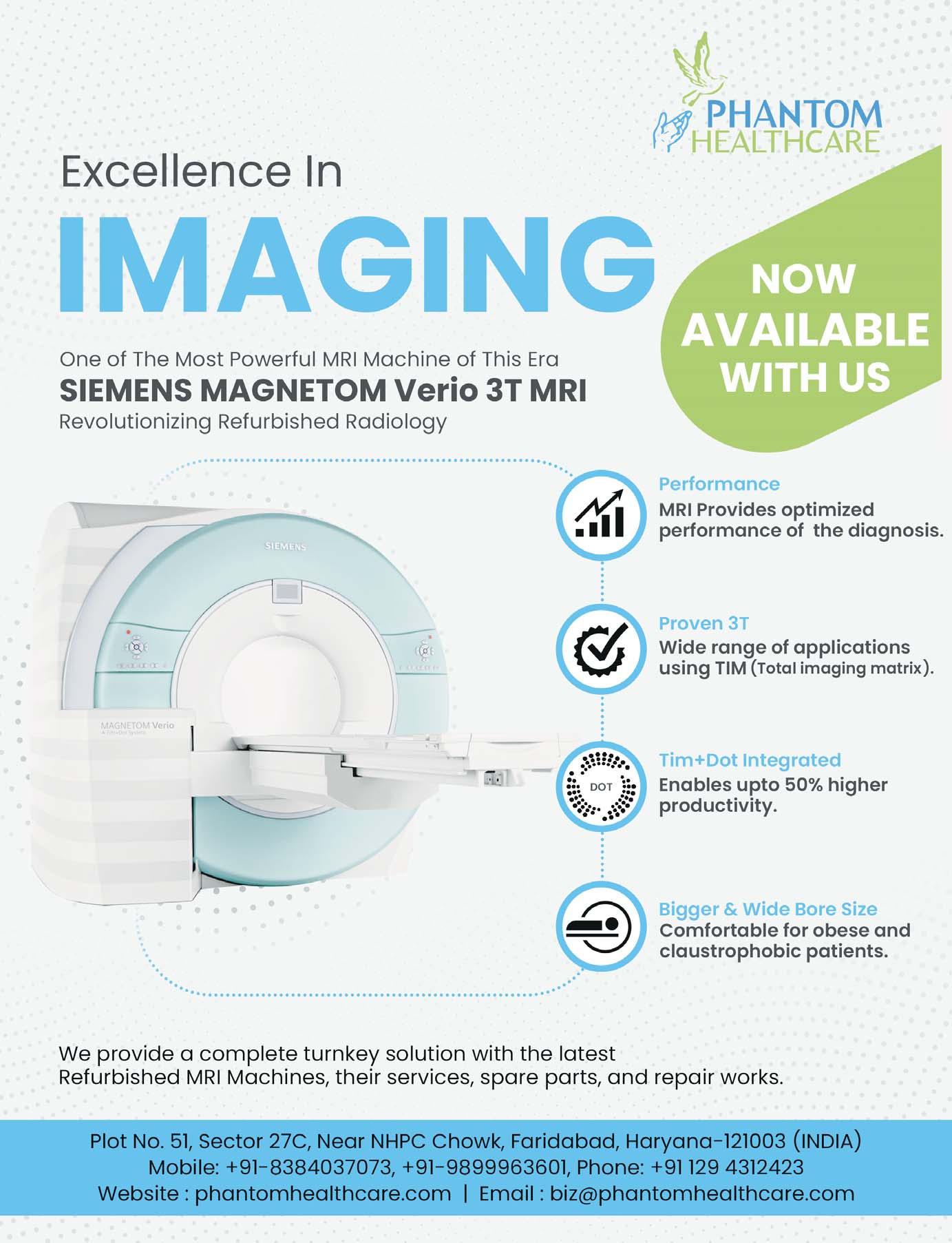
REGD.WITH RNI NO.MAHENG/2007/22045,POSTAL REGD.NO.MCS/162/2022 – 24,PUBLISHED ON 8TH EVERY MONTH, POSTED ON 14TH,15TH,16TH EVERY MONTH,POSTED AT MUMBAI PATRIKA CHANNEL SORTING OFFICE,MUMBAI – 400001













































 DualIncuiAirIncuiFloret1000
Series
BlossomDuo
InfaWarmerSunflower Warmer
DualIncuiAirIncuiFloret1000
Series
BlossomDuo
InfaWarmerSunflower Warmer














































































 ByKalyani Sharma
ByKalyani Sharma




 Metropolis Healthcare
Metropolis Healthcare
































































